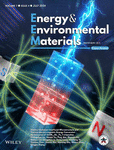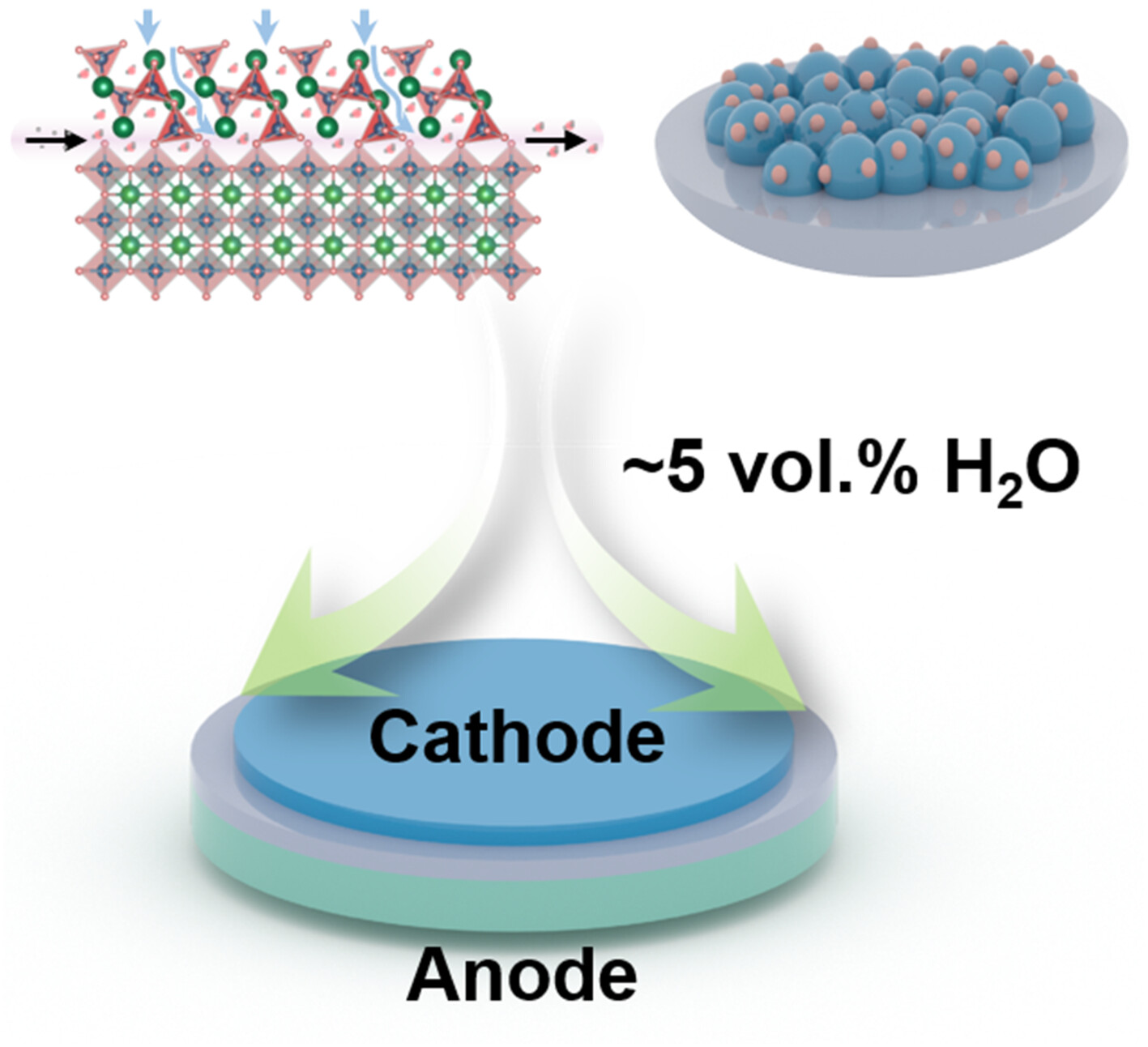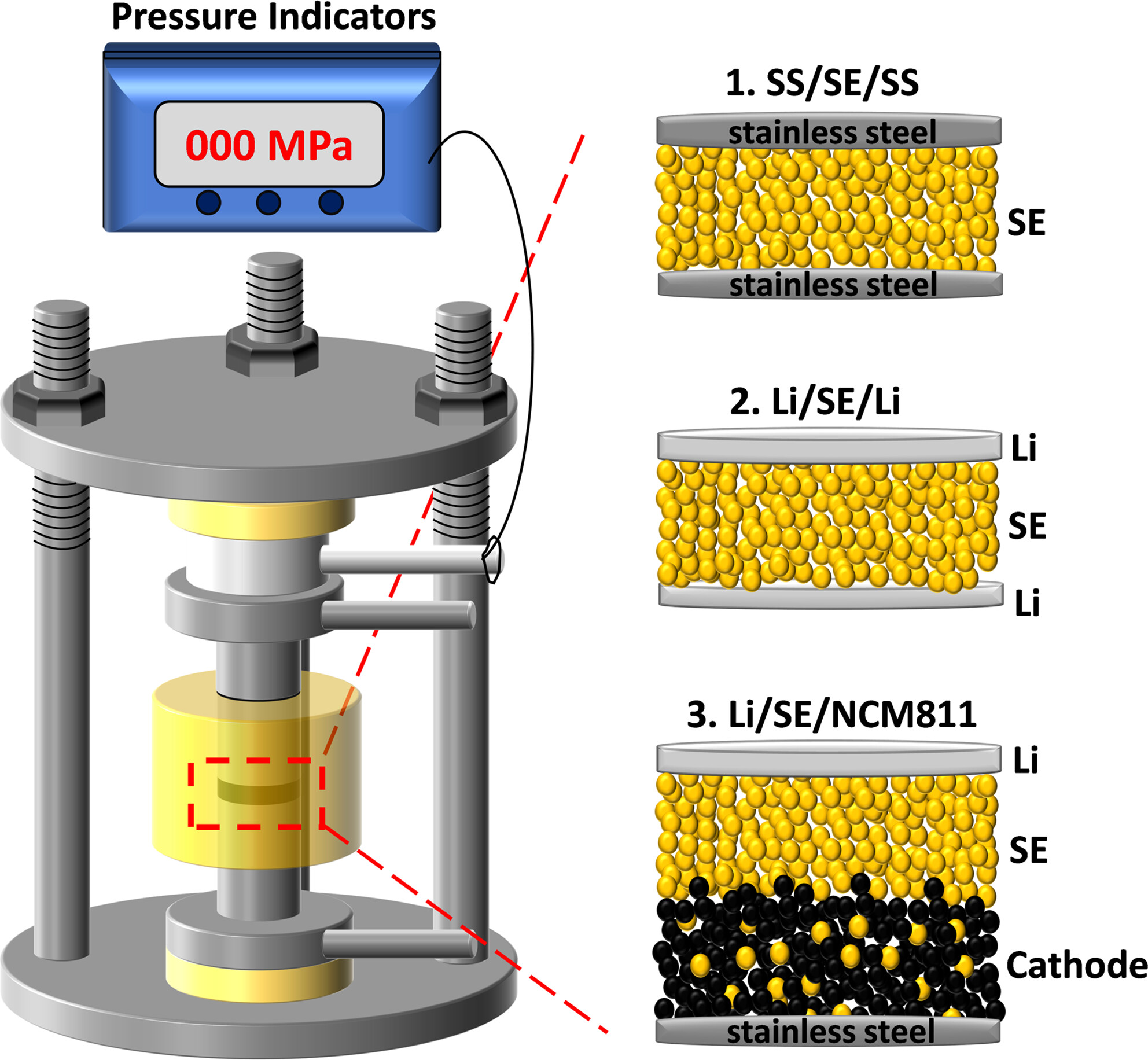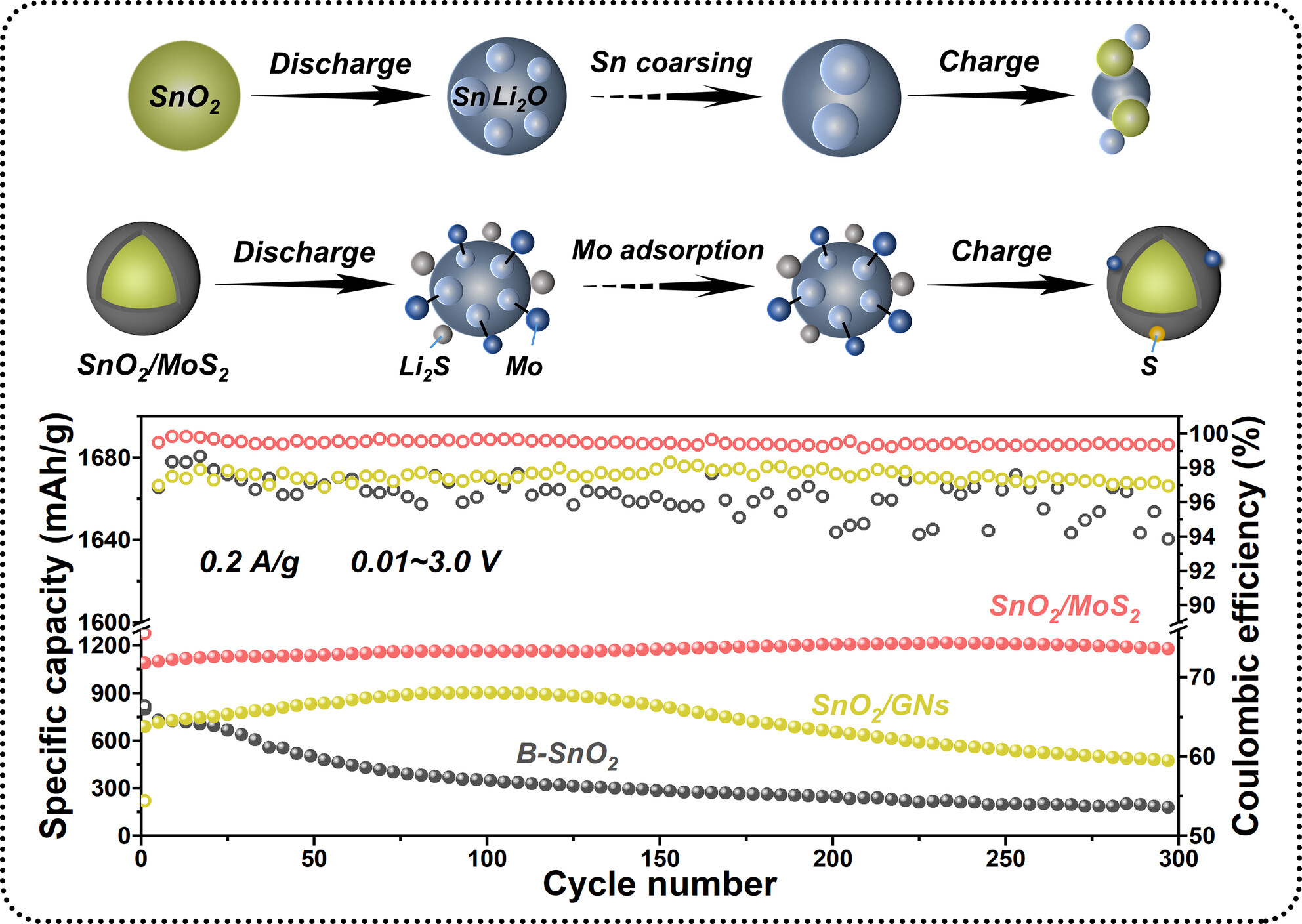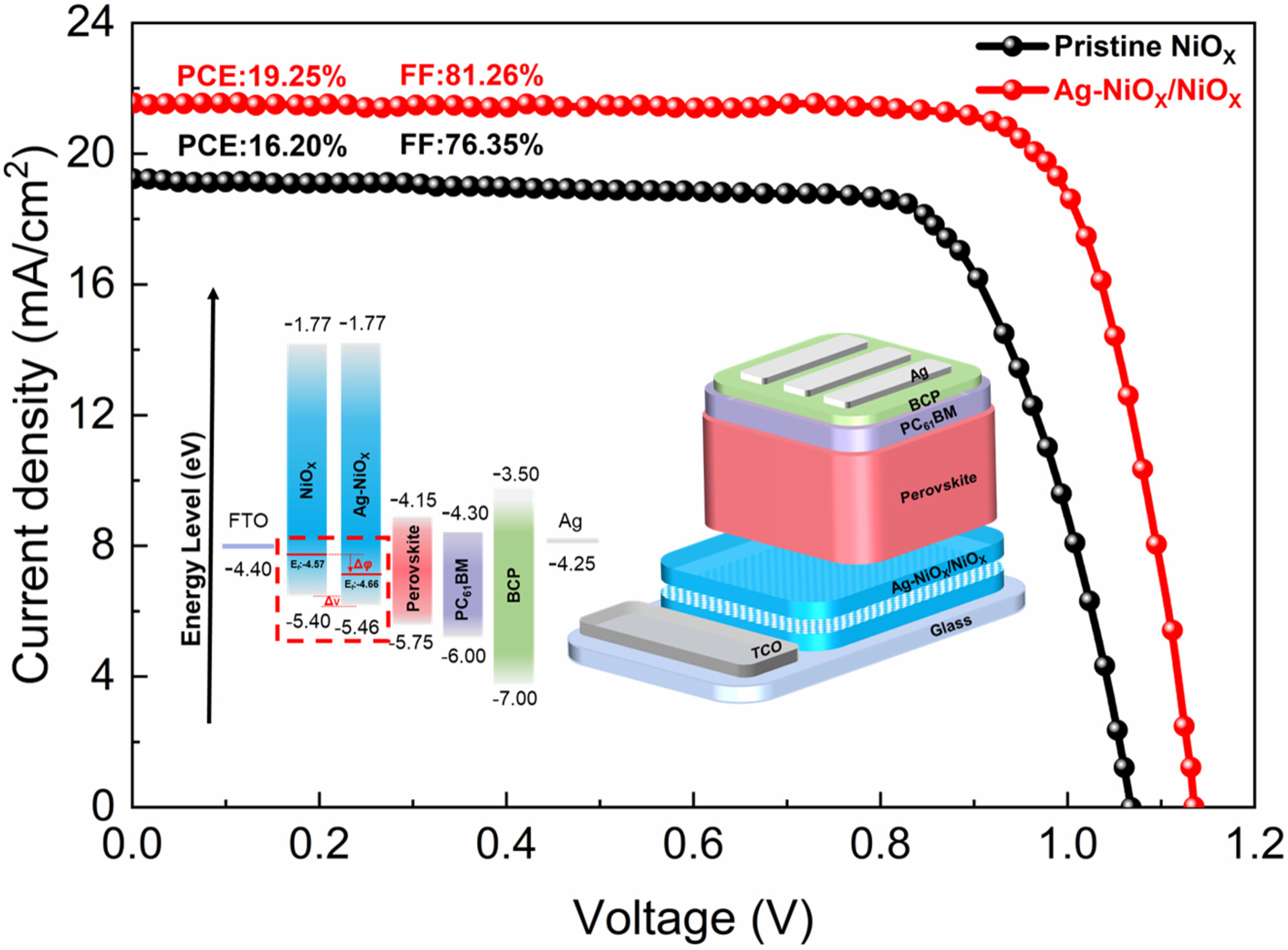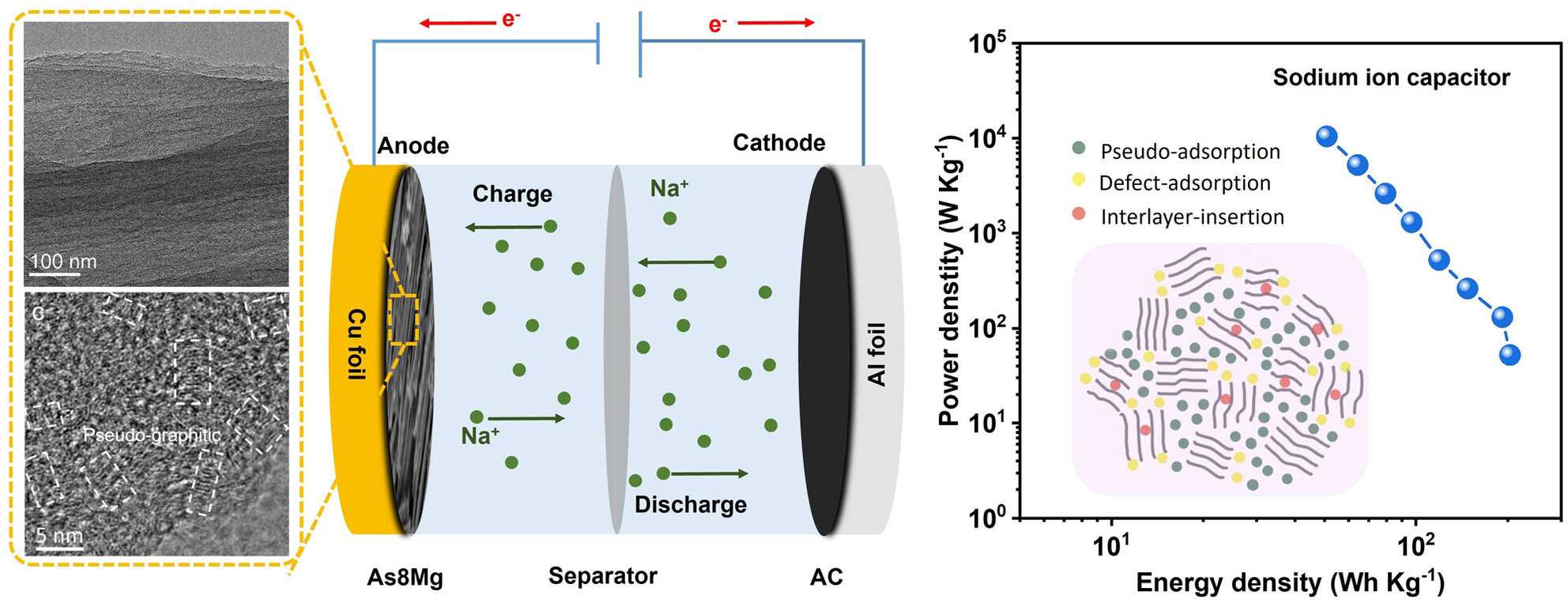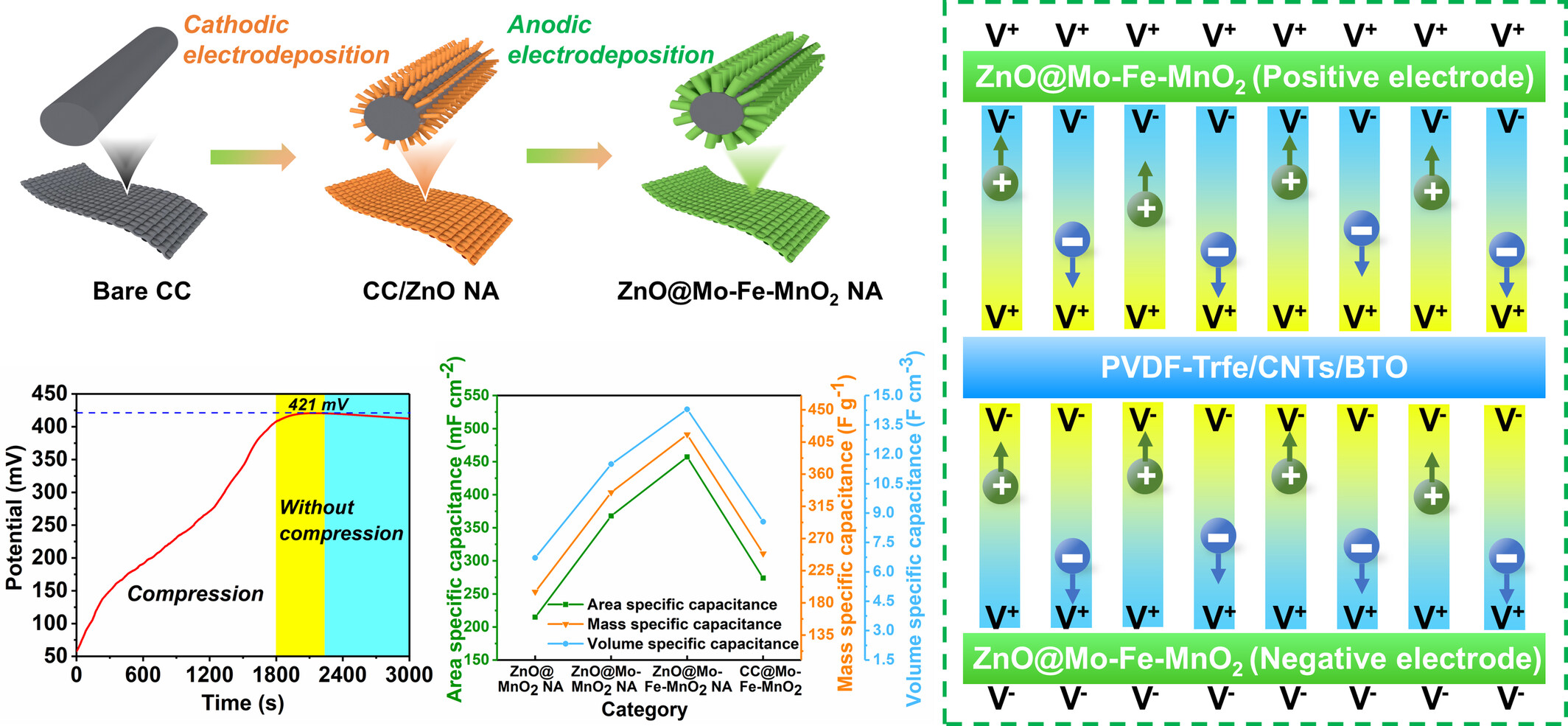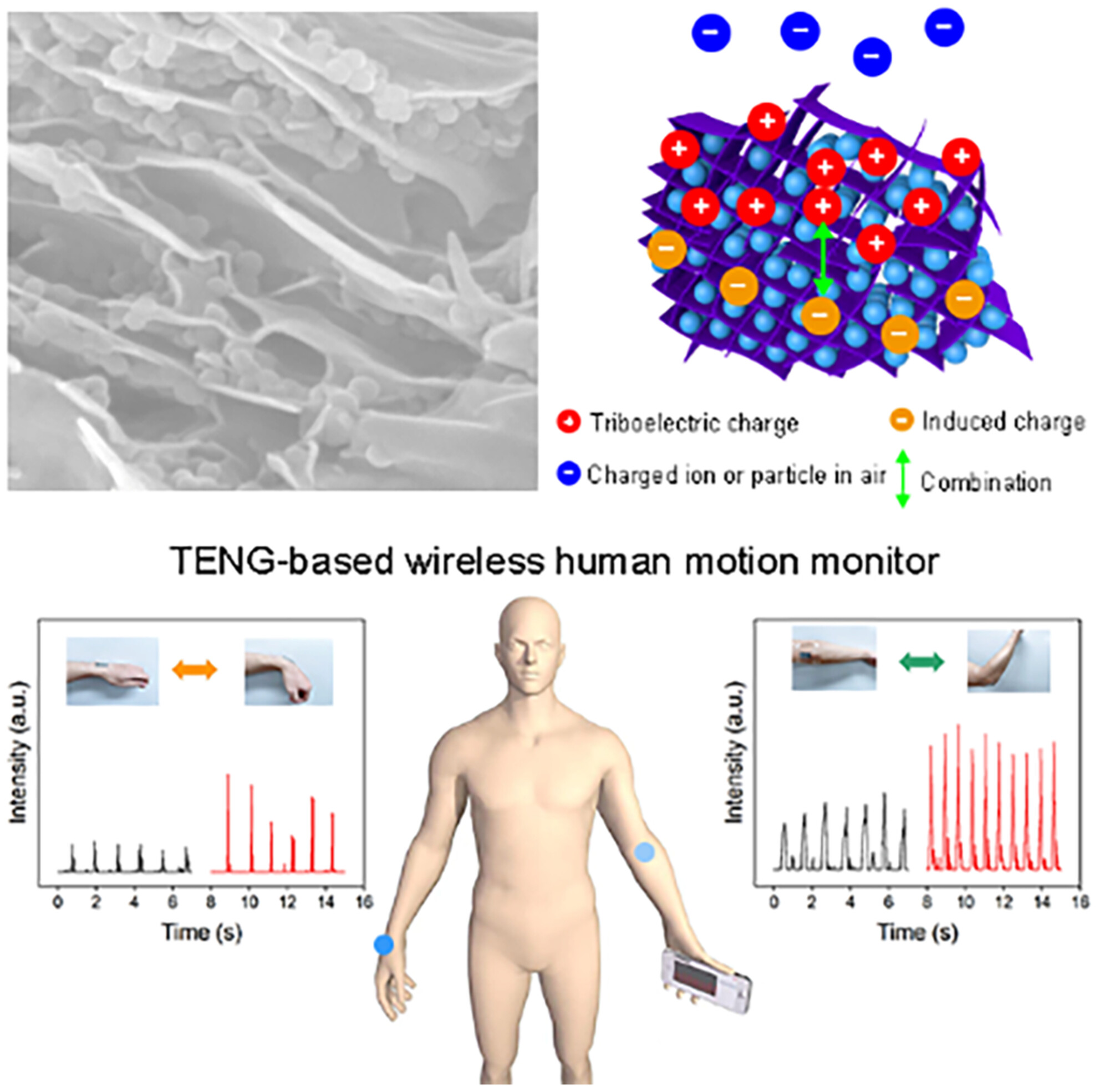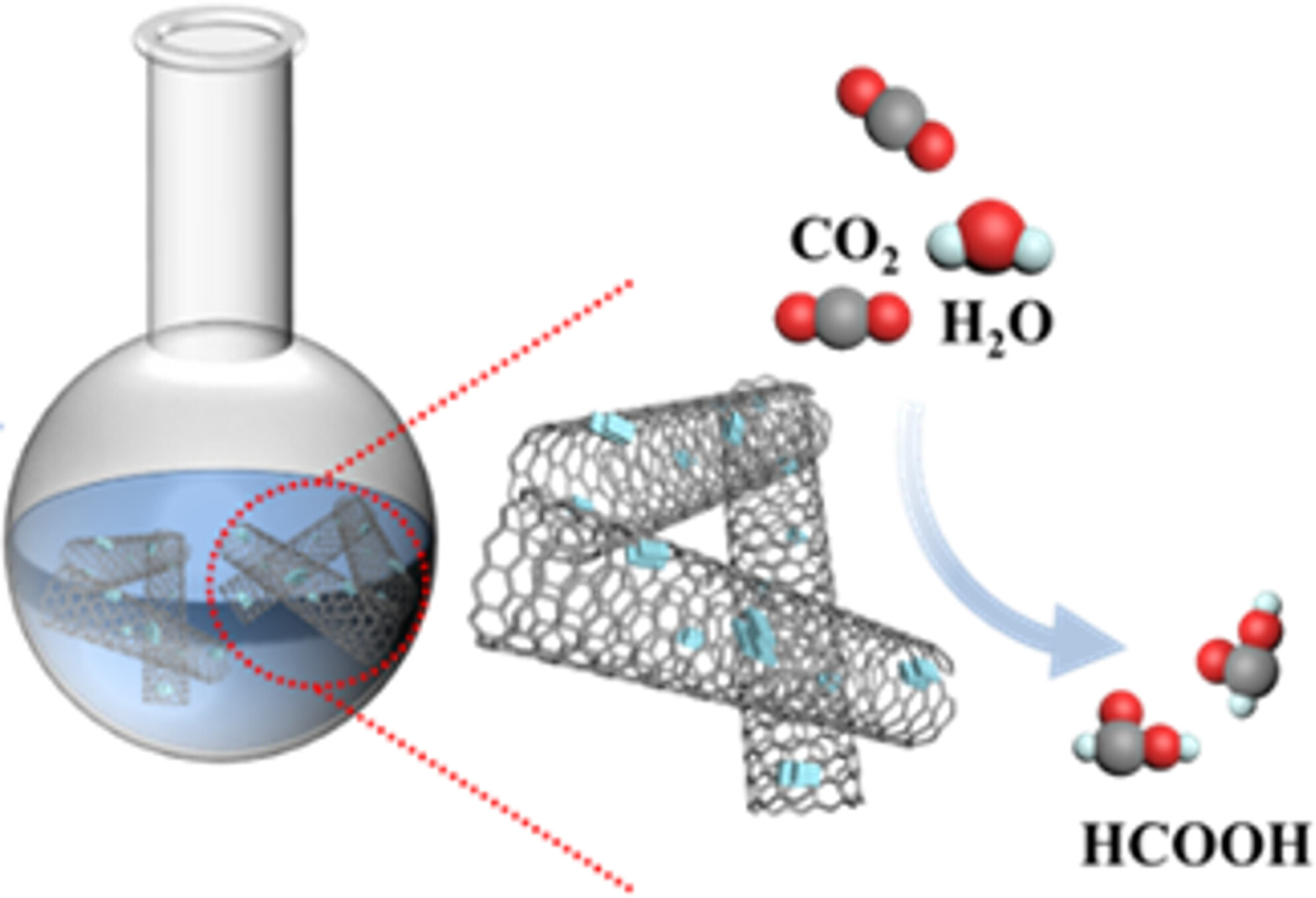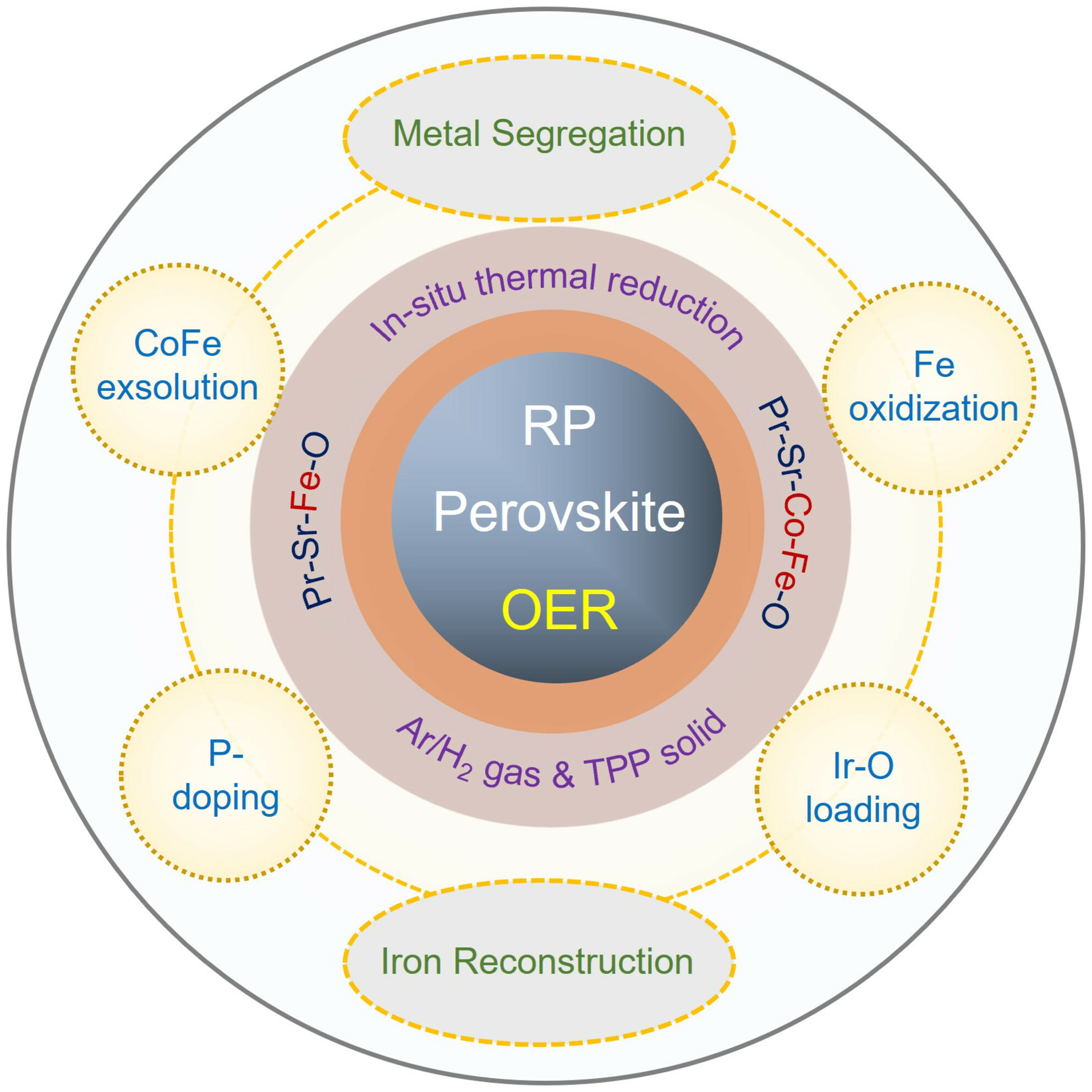Journal list menu
Export Citations
Download PDFs
ISSUE INFORMATION
BATTERIES
Lithium Sulfur Batteries
Lithium Sulfur Batteries: Insights from Solvation Chemistry to Feasibility Designing Strategies for Practical Applications
- First Published: 07 February 2024
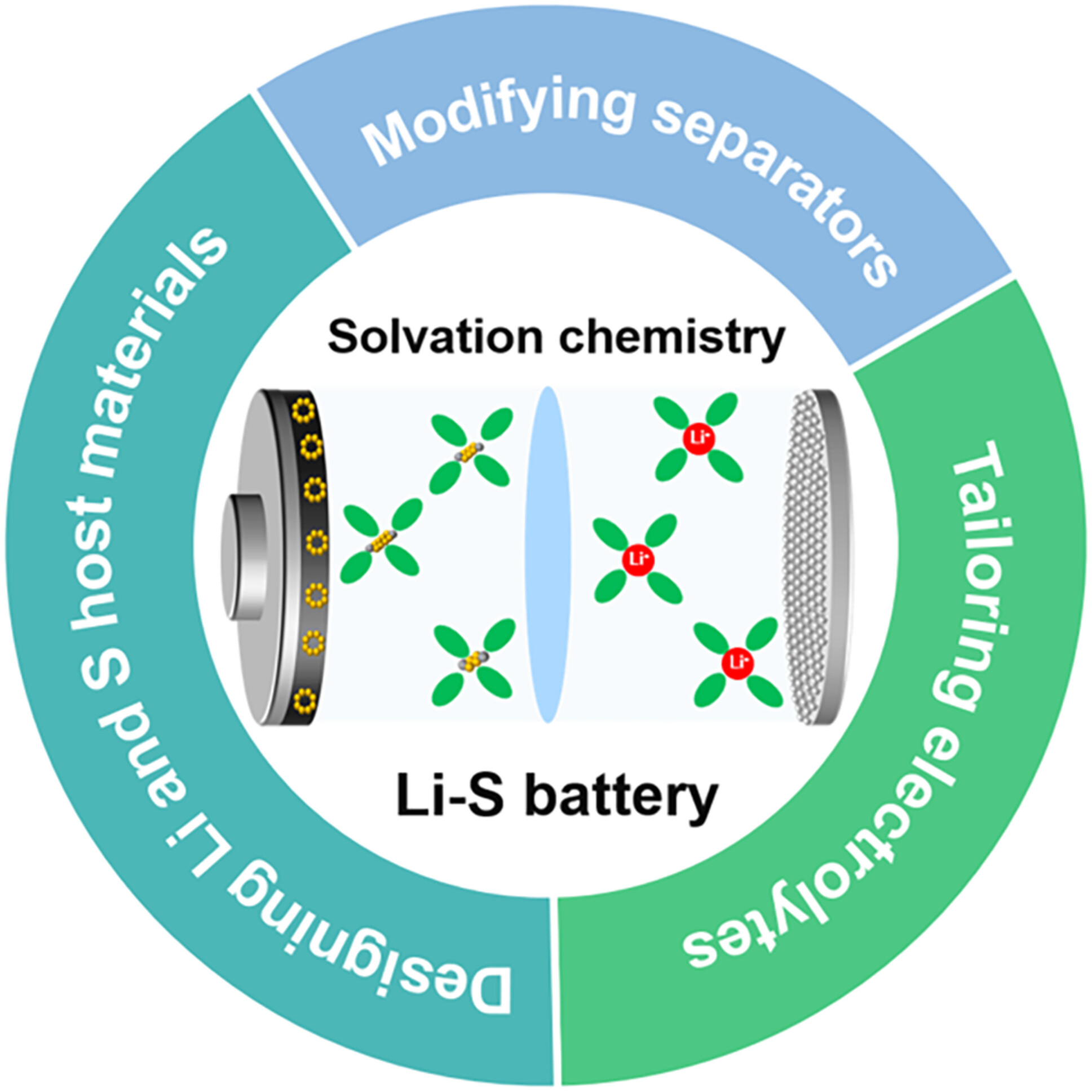
This review presents a systematic and comprehensive understanding on the solvation structure of Li polysulfides (LiPSs) in Li–S battery system, and summarizes some feasible designing strategies that can simultaneously suppress the shuttle effect of soluble LiPSs and the growth of Li dendrites, including designing host materials, modifying separators, and tailoring electrolytes, aiming to provide some inspirations to build better Li–S batteries for promoting the practical applications.
Solid-State Lithium-Ion Batteries
Interface Engineering on Constructing Physical and Chemical Stable Solid-State Electrolyte Toward Practical Lithium Batteries
- First Published: 22 January 2024
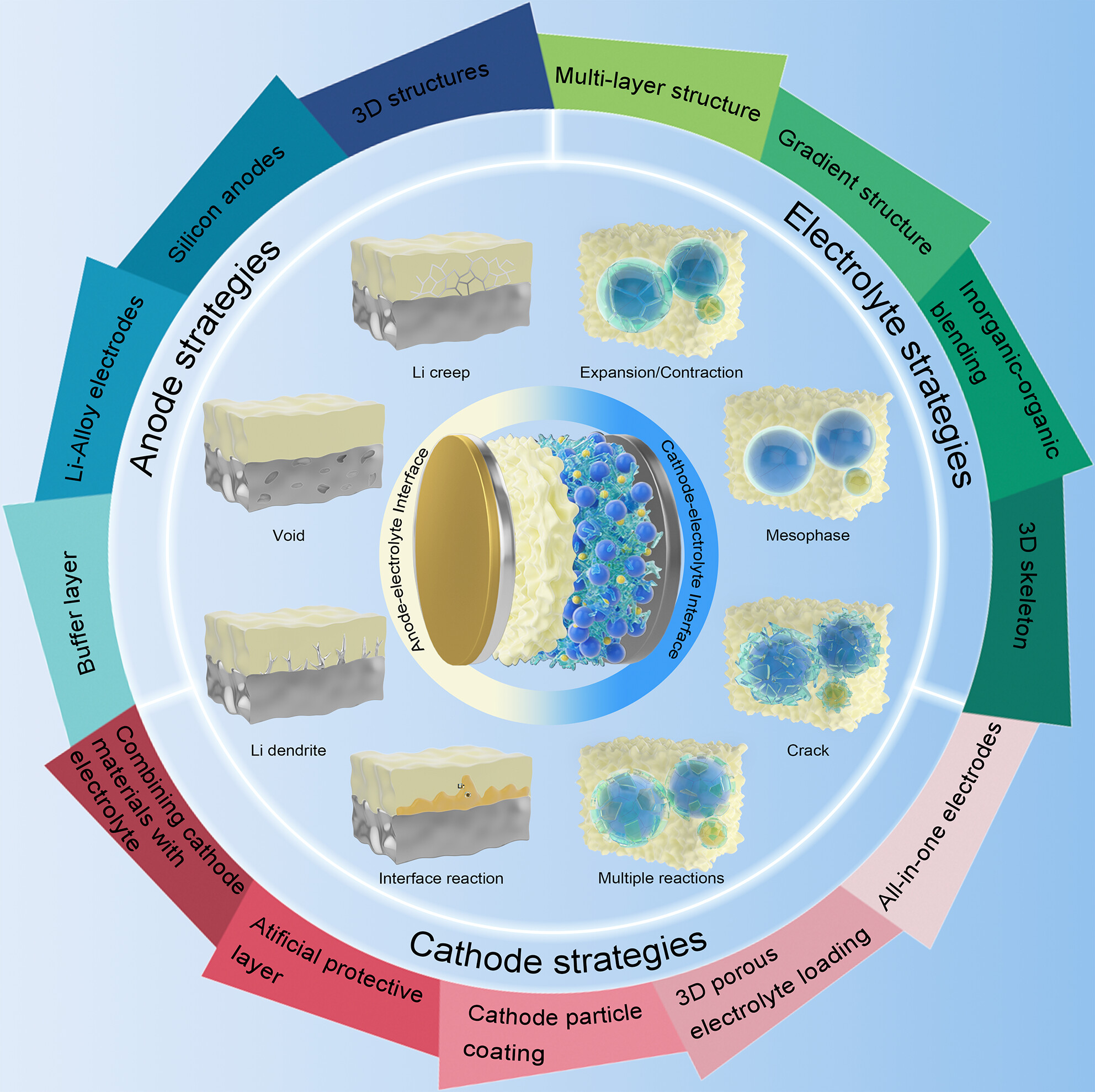
The state-of-the-art developments in rational design of solid-state electrolyte and their progression toward practical applications are reviewed. The origin of interface instability and the sluggish charge carrier transportation in solid–solid interface are presented. Then, various strategies toward stabilizing interfacial stability are summarized from the physical and chemical perspective. Finally, the remaining challenges and future development trends of solid-state electrolyte are prospected.
Lithium Sulfur Batteries
Progresses and Prospects of Asymmetrically Coordinated Single Atom Catalysts for Lithium−Sulfur Batteries
- First Published: 11 February 2024
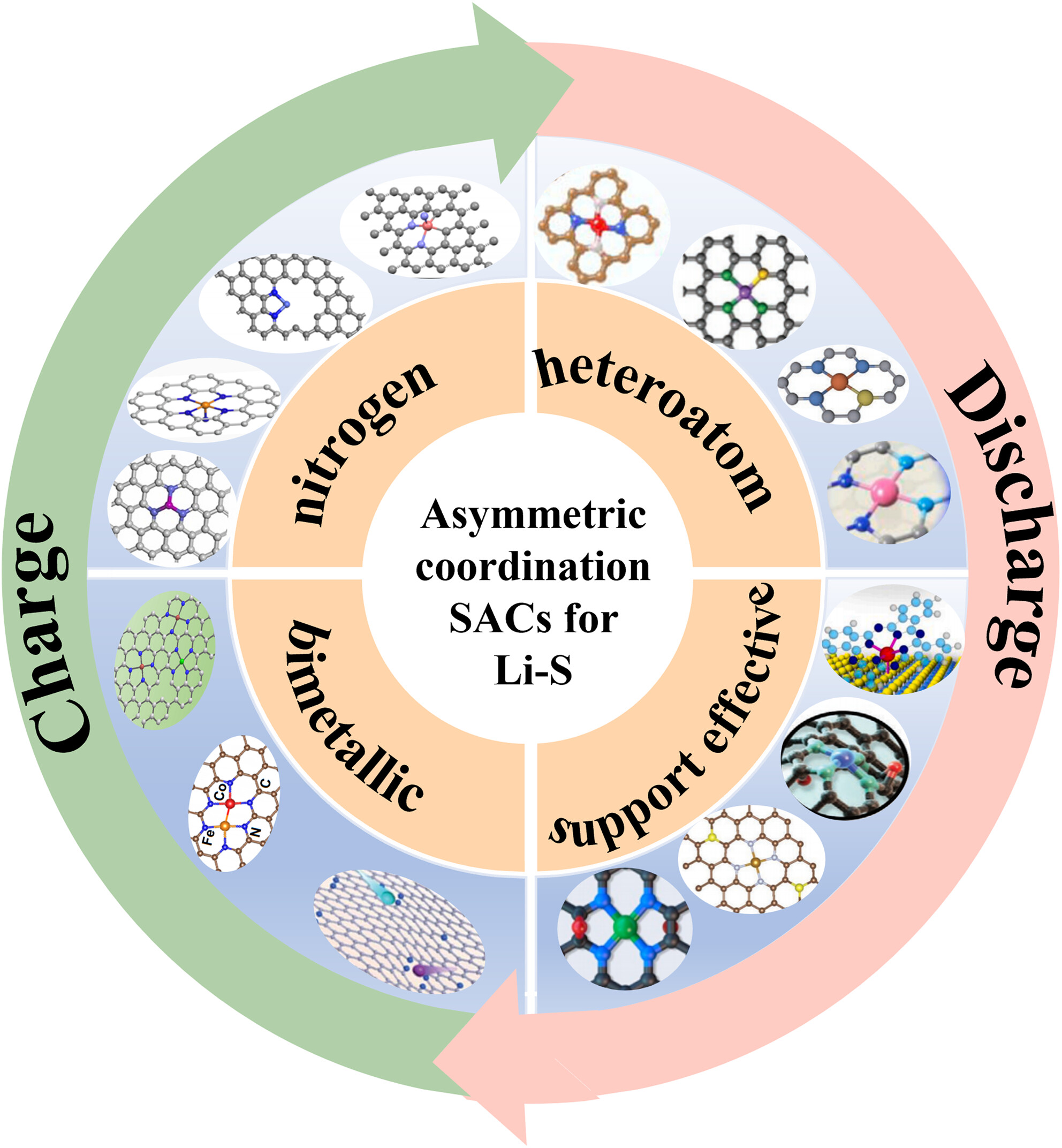
In this review, we systematically describe the recent advancements of asymmetrically coordinated single-atom structure as battery reactions catalysts in lithium–sulfur batteries, including the asymmetrically nitrogen-coordinated SACs, heteroatom coordinated SACs, support effective asymmetrically coordinated SACs, and bimetallic coordinated SACs. Particularly noteworthy are the discussions of the catalytic conversion mechanism of LiPSs spanning asymmetrically coordinated SACs.
Potassium Ion Batteries
3D Foam-Based MXene Architectures: Structural and Electrolytic Engineering for Advanced Potassium-Ion Storage
- First Published: 11 March 2022
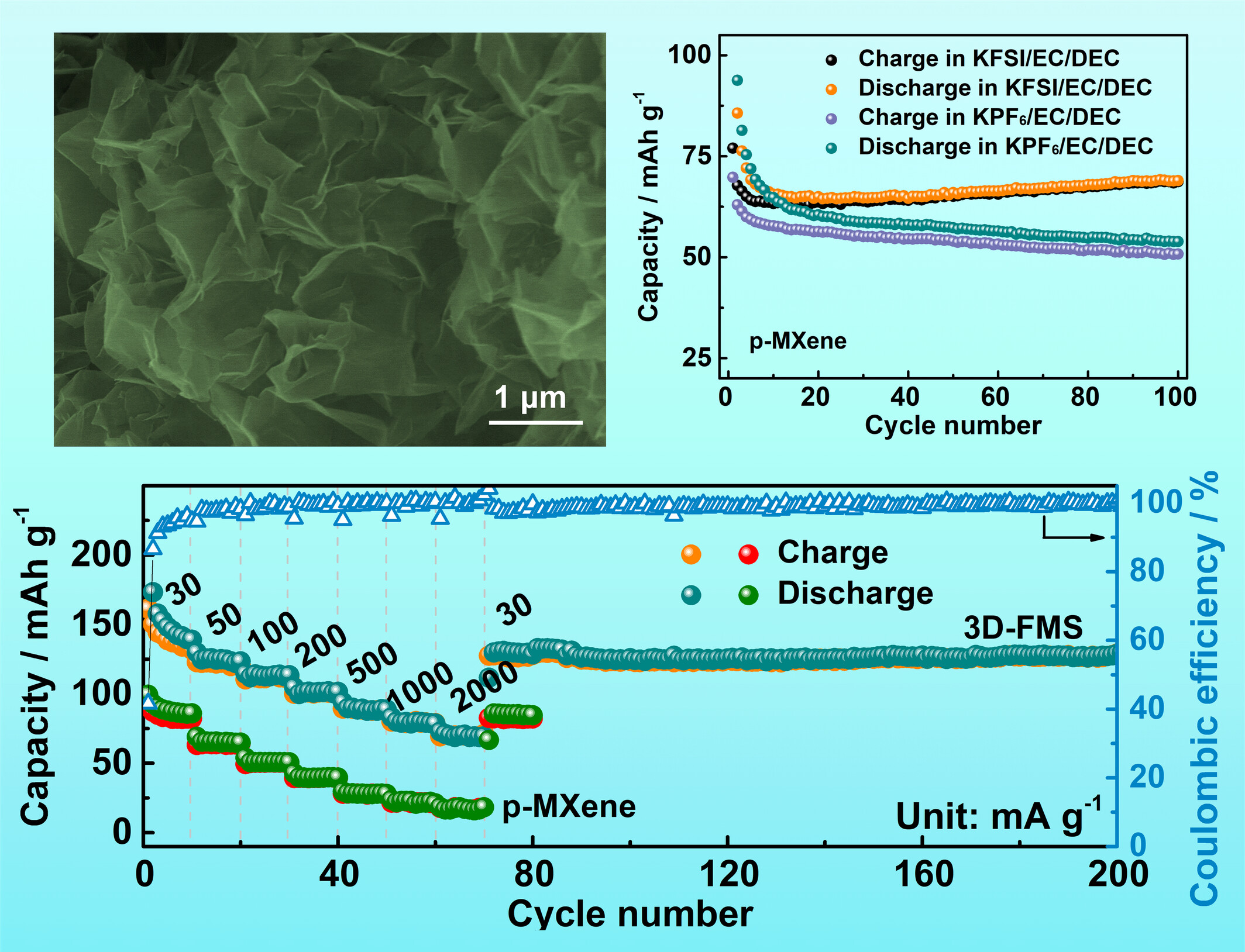
A 3D foam-like MXene scaffold is constructed to exposes the surface-active sites and facilitates fast K+ transfer, while KFSI-based electrolyte is selected to boost the Coulombic efficiency. The 3D MXene foam with KFSI-based electrolyte exhibits excellent potassium storage performance in terms of capacity, rate capability, and cycling stability.
Materials Science
Regulation of Lithium-Ion Flux by Nanotopology Lithiophilic Boron-Oxygen Dipole in Solid Polymer Electrolytes for Lithium-Metal Batteries
- First Published: 06 July 2023
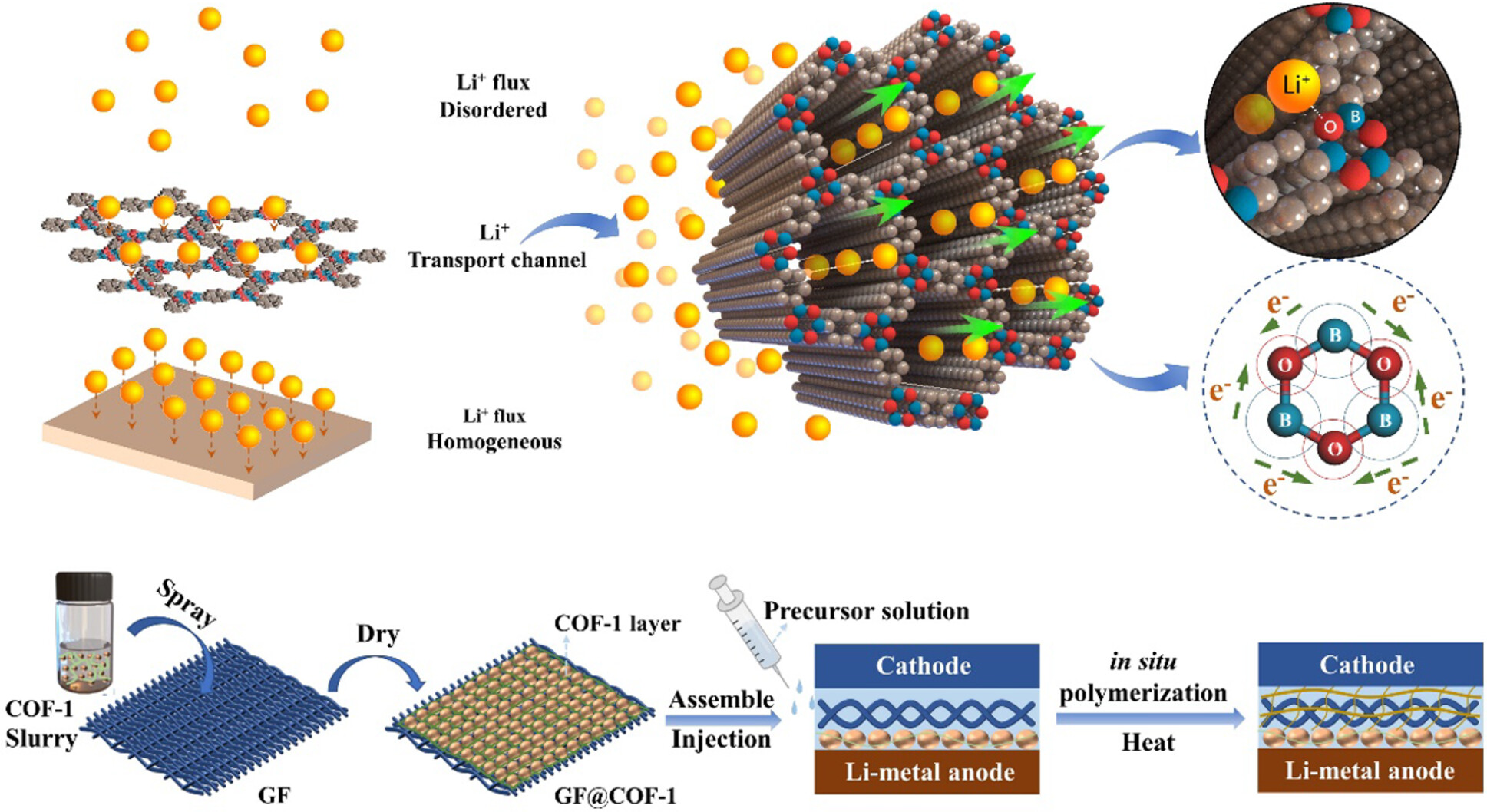
Inhomogeneous lithium-ion (Li+) deposition is one of the most crucial problems for Li-metal anode in solid-state lithium metal batteries (LMBs). In this work, we found that the covalent organic framework (COF-1) with periodically arranged boron-oxygen dipole lithiophilic sites could directionally guide Li+ even deposition in asymmetric solid polymer electrolytes. Besides, This in situ prepared 3D cross-linked network Poly(ACMO-MBA) hybrid electrolyte simultaneously delivers outstanding ionic conductivity (1.02 × 10−3 S cm−1 at 30 °C) and excellent mechanical property (3.5 MPa). The defined nanosized channel in COF-1 selectively conduct Li+ improving Li+ transference number to 0.67. The COF-1 layer and Poly(ACMO-MBA) also participate in forming a boron-rich and nitrogen-rich stable solid electrolyte interface to further improve the interfacial stability. This work thereby further broadens and complements the application of COF materials in polymer electrolyte for dendrite-free and high-energy-density solid-state LMBs.
Protonic Ceramic Fuel Cells
New Strategy for Boosting Cathodic Performance of Protonic Ceramic Fuel Cells Through Incorporating a Superior Hydronation Second Phase
- First Published: 09 July 2023
Solid-State Batteries
How Does Stacking Pressure Affect the Performance of Solid Electrolytes and All-Solid-State Lithium Metal Batteries?
- First Published: 07 September 2023
Sodium Ion Batteries
Lowering Sodium-Storage Lattice Strains of Layered Oxide Cathodes by Pushing Charge Transfer on Anions
- First Published: 06 November 2023
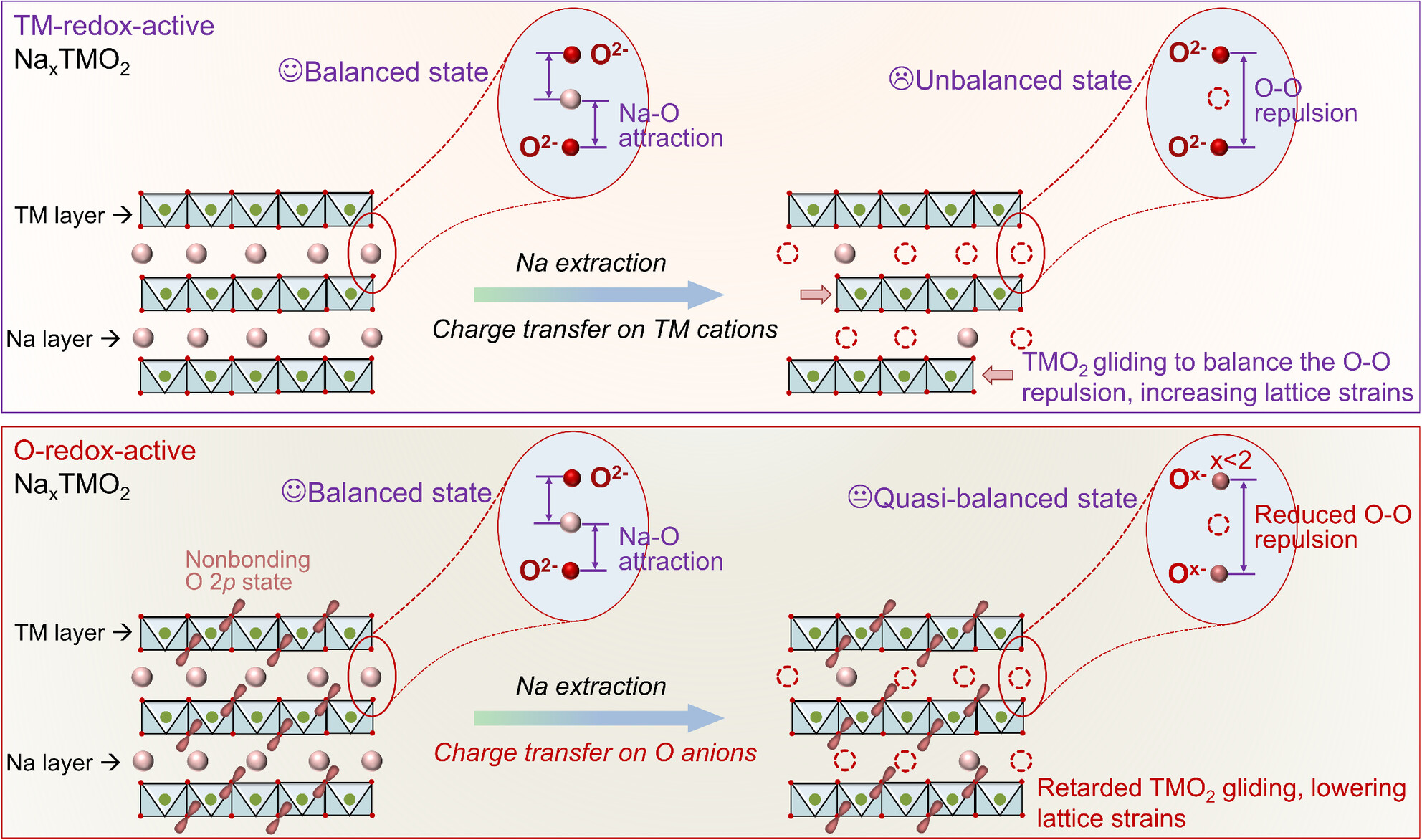
The multiple phase transitions originating from the increased interlayer O−O repulsion commonly occurred in NaxTMO2, which can cause large lattice strains and result in cycled structure collapse and degraded electrochemical properties such as capacity loss and voltage decay. To retard the phase transitions and lower the lattice strains, we for the first time highlight the positive role of anionic redox charge compensation in stabilizing the Na-storage lattice structure of layered oxides. Through pushing the charge transfer on anions during the Na extraction process, we not only increase the materials’ redox activity but also reduce the interlayer O−O repulsion, retarding the multiple phase transitions and lowering the lattice strains.
Potassium-Ion Battery
Lignite-Based Hierarchical Porous C/SiOx Composites as High-Performance Anode for Potassium-Ion Batteries
- First Published: 19 October 2023
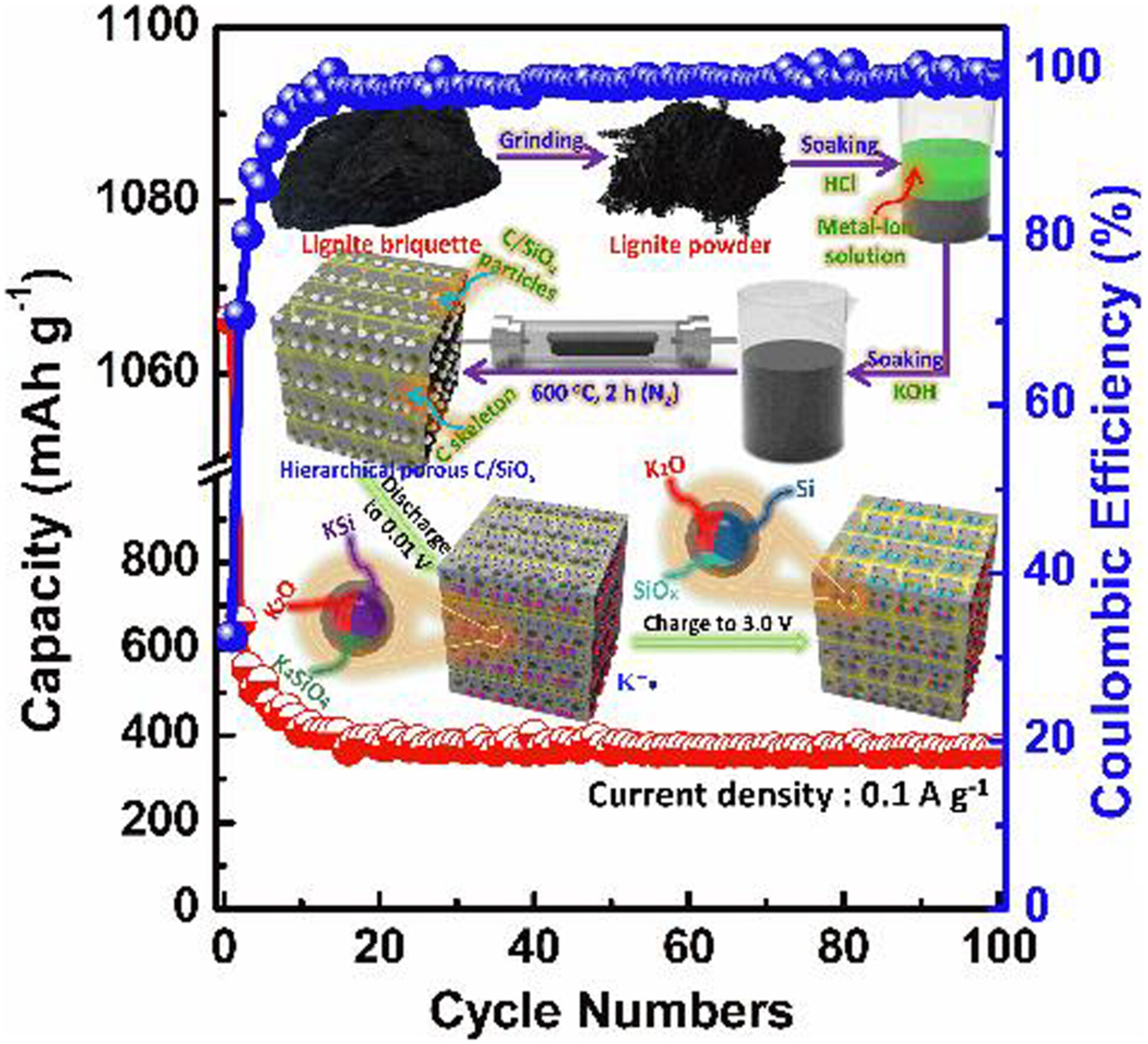
Porous C/SiOx anode materials with high specific surface area using natural lignite were synthesized for the first time, and employed as anodes of potassium ion battery. The electrochemical mechanism of these C/SiOx was revealed by ex-situ XRD, TEM, and SAED characterizations. Furthermore, the reversible potassium storage capacity of K4SiO4 was confirmed by DFT (density functional theory) calculations. Reversibly formed KSi and K4SiO4 render excellent potassium storage capacity in C/SiOx anodes for potassium ion storage. The S-T600 anode can maintain a reversible capacity at 370 mAh g−1 under 0.1 A g−1 after 100 cycles.
Energy Materials
Li-Rich Organosulfur Cathode with Boosted Kinetics for High-Energy Lithium-Sulfur Batteries
- First Published: 22 January 2024
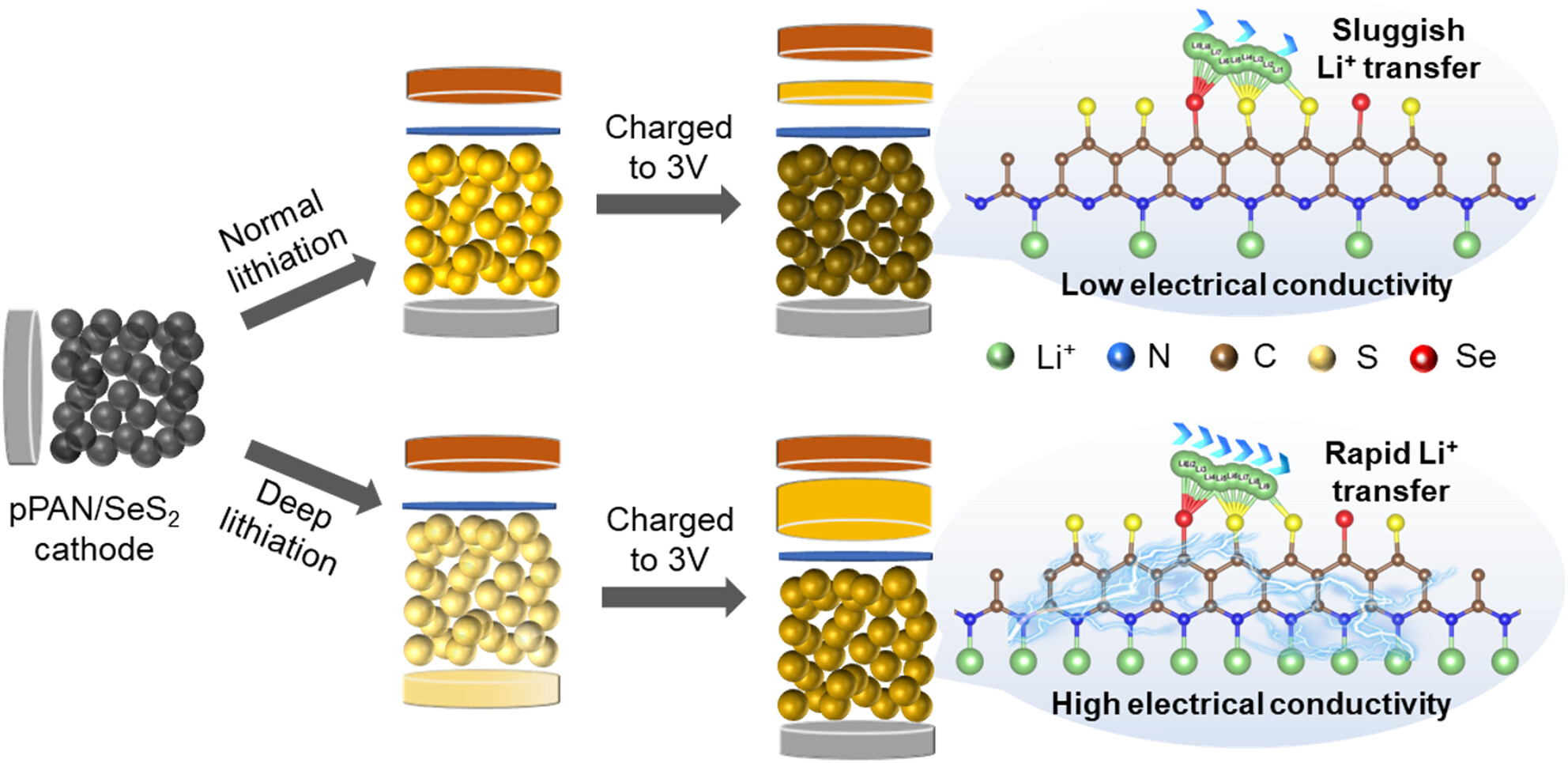
Deep lithiation of a pyrolyzed polyacrylonitrile/selenium disulfide (pPAN/Se2S3) composite cathode (DL-pPAN/Se2S3) has been performed to obtain a Li-rich organosulfur cathode. It accelerates the Li+ diffusivity, improves the electronic conductivity and more importantly provides (electro)chemically stable Li resources to offset Li loss over charge–discharge cycles. As-fabricated anode-free Li-S cell shows a high-energy density and excellent cycling stability.
Thermal Battery
Low-Volatile Binder Enables Thermal Shock-Resistant Thin-Film Cathodes for Thermal Batteries
- First Published: 20 November 2023
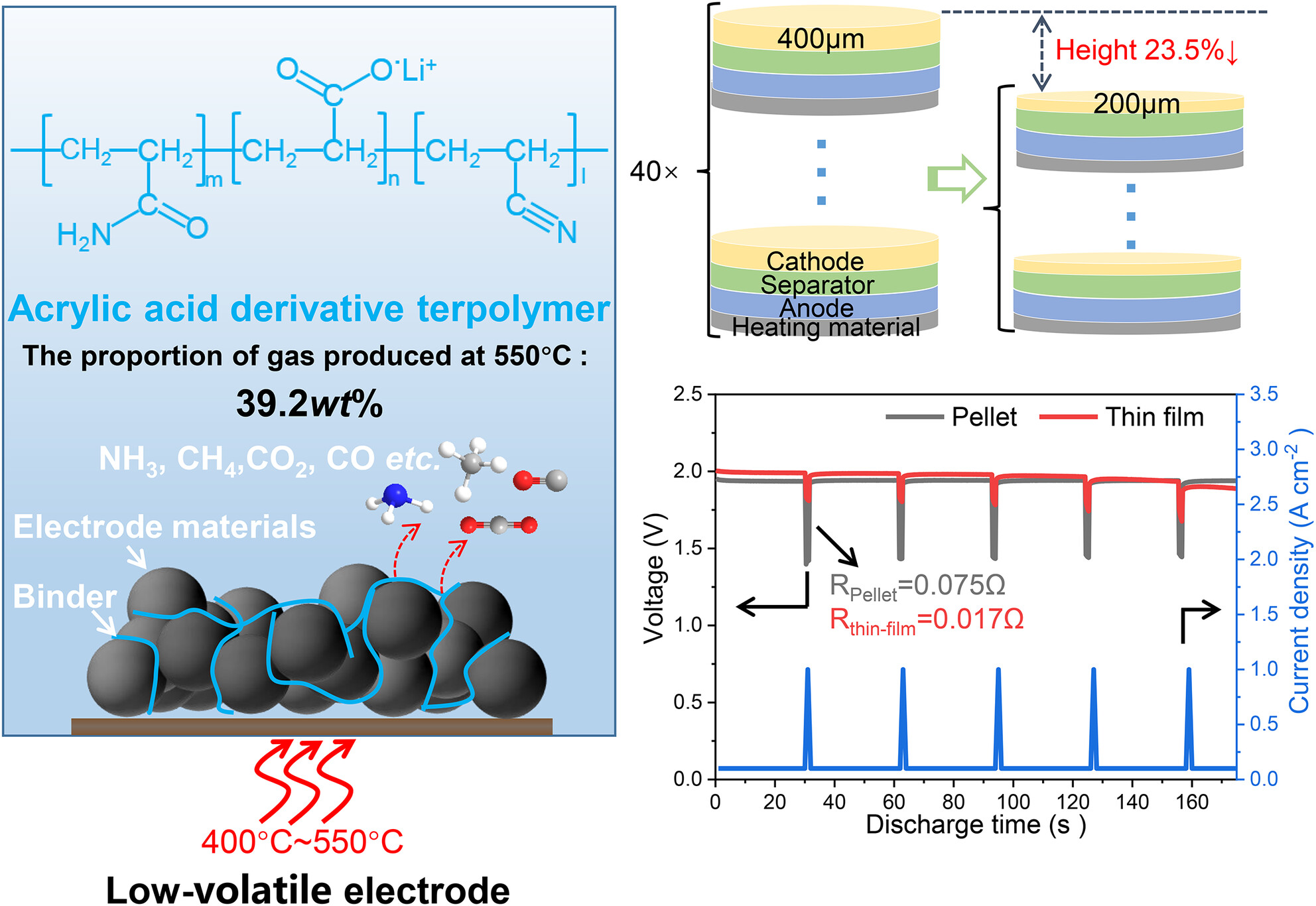
A thermal shock-resistant thin-film cathode has been realized by using acrylic acid derivative terpolymer (LA136D) as a low-volatile binder for thermal batteries. It is shown that the LA136D-based thin-film cathodes exhibited a remarkable 440% reduction in polarization and 300% enhancement in the utilization efficiency of cathode materials, with just a slight increase of 0.05 MPa in gas pressure in thermal battery stacks compared with traditional “pressed-pellet” cathode.
Lithium Ion Batteries
Binding SnO2 Nanoparticles with MoS2 Nanosheets Toward Highly Reversible and Cycle-Stable Lithium/Sodium Storage
- First Published: 10 December 2023
Sodium Ion Batteries
Fe3O4/Fe/FeS Tri-Heterojunction Node Spawning N-Carbon Nanotube Scaffold Structure for High-Performance Sodium-Ion Battery
- First Published: 11 December 2023
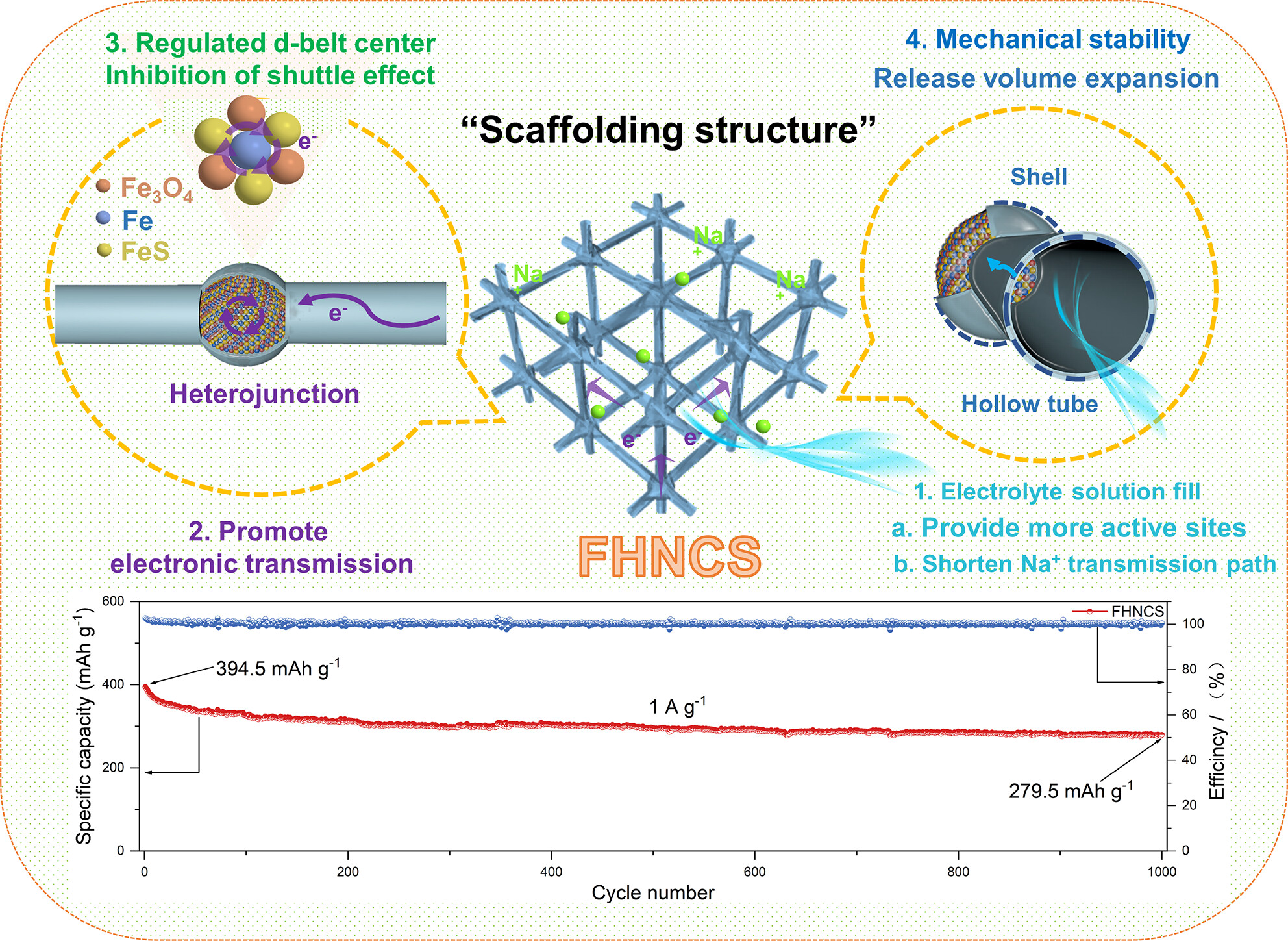
N-doped carbon tube and Fe3O4/Fe/FeS tri-heterojunction in FHNCS organize a 3D conductive network, shorten the Na+ diffusion path, and exhibit excellent mechanical stability, wherein the d-band center of Fe in Fe3O4 is adjusted to enhance the adsorption with Na2S. Therefore, the FHNCS demonstrates excellent rate capability and cycling stability.
Anode-Free Batteries
Stoichiometric Ti3C2Tx Coating for Inhibiting Dendrite Growth in Anode-Free Lithium Metal Batteries
- First Published: 28 February 2024
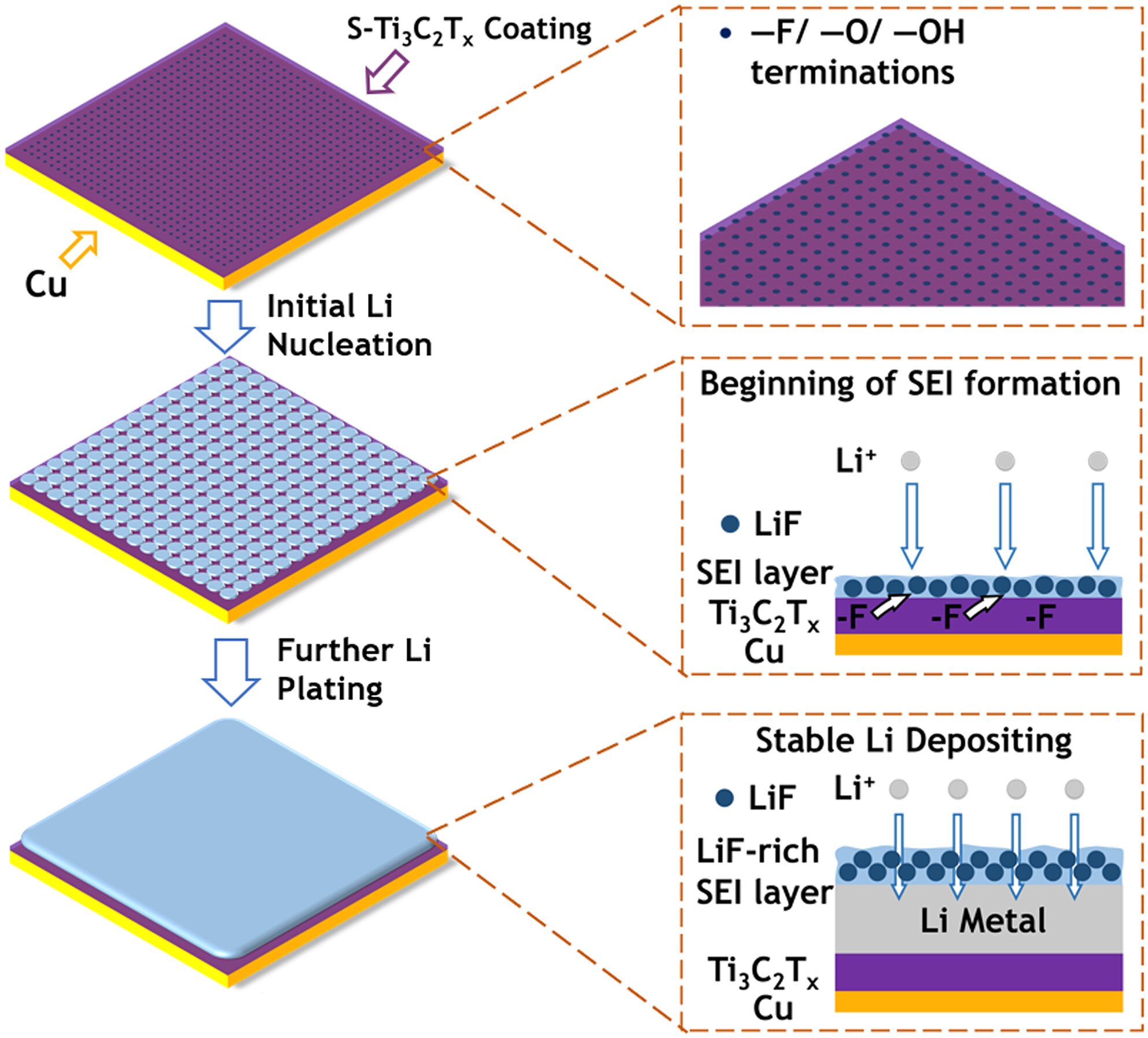
A stoichiometric Ti3C2Tx coating on Cu current collectors is employed for anode-free lithium metal batteries (AFLMBs). The surface terminations (–O, –OH, and –F) of Ti3C2Tx promote uniform Li nucleation and contribute to inducing a LiF-rich solid electrolyte interphase, leading to enhanced cycling stability in AFLMBs.
All-Solid-State Lithium–Sulfur Batteries
In Situ-Constructed LixMoS2 with Highly Exposed Interface Boosting High-Loading and Long-Life Cathode for All-Solid-State Li–S Batteries
- First Published: 10 December 2023
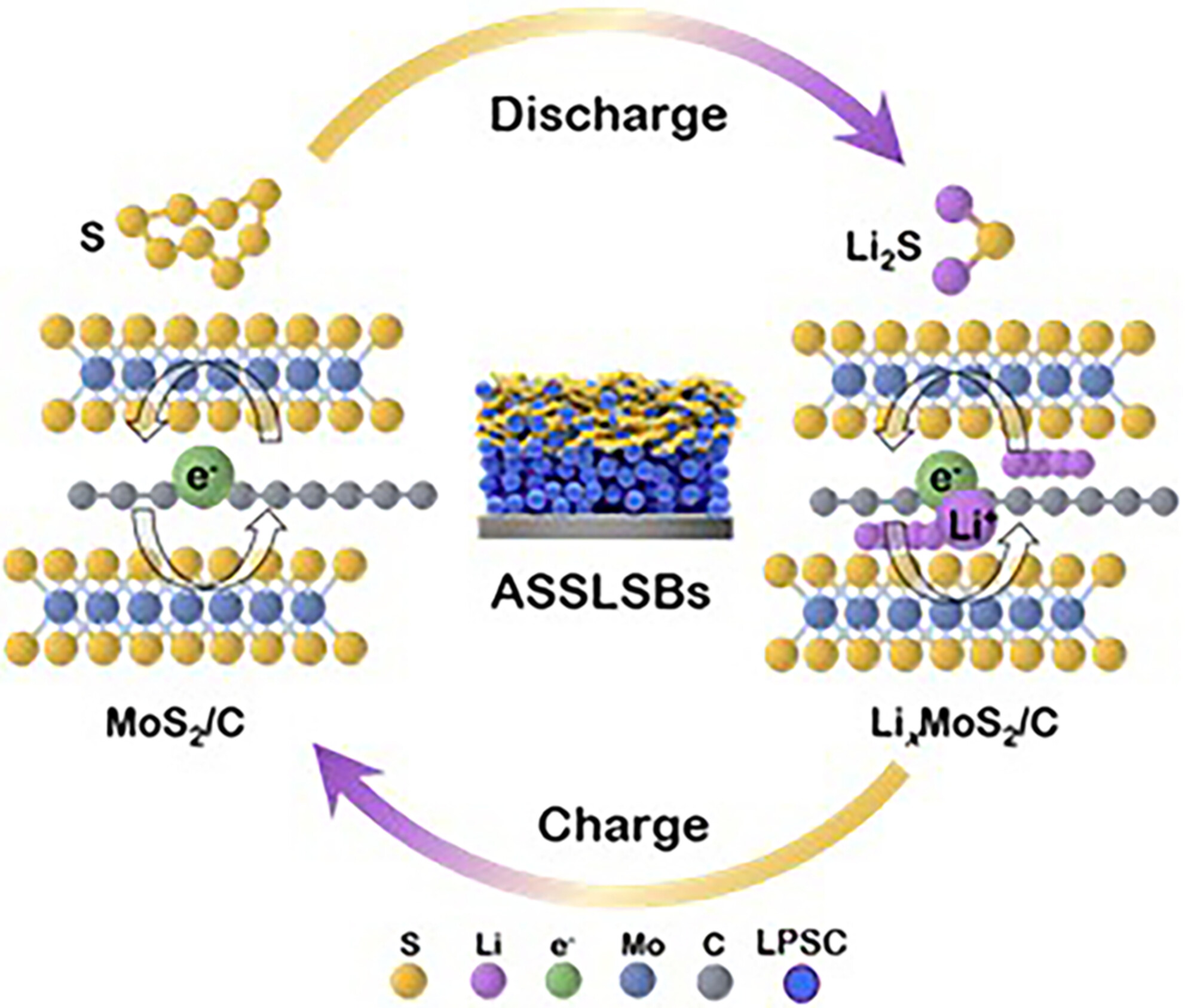
The few-layered S/MoS2/C nanosheet hybrid cathode is designed for ASSLSBs with low carbon content, high active material ratio, and high areal capacity. Such a design owns multi-merits: highly exposed surfaces allow intimate area-to-area contacts between active materials and sulfide SSE; in-suit forming LixMoS2 for mixed ion/electron network to improve the S/Li2S conversion; contributing to extra capacity for the part of active materials.
SOLAR CELL
Solar Cell
The Role of Grain Boundaries in Organic–Inorganic Hybrid Perovskite Solar Cells and its Current Enhancement Strategies: A Review
- First Published: 31 January 2024
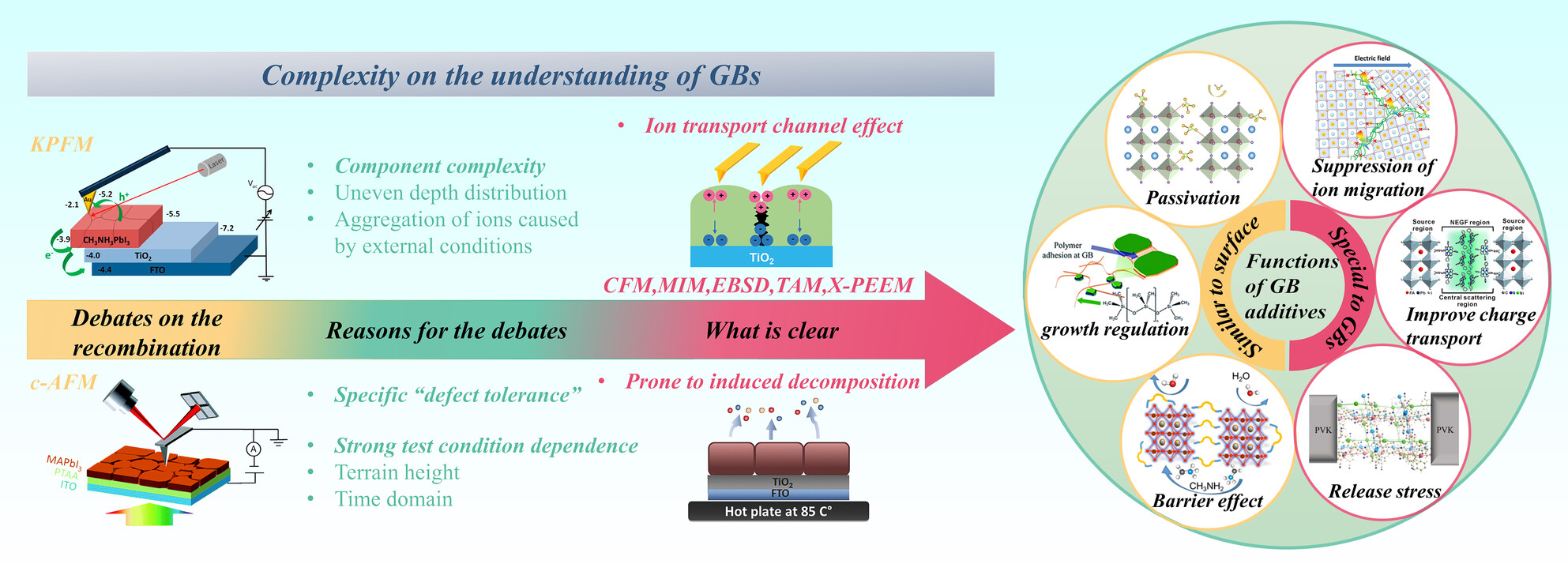
Two remaining issues on GBs: 1) The unclear role in charge carrier dynamics due to their component complexity/defect tolerance nature and the insufficiency in testing accuracy and 2) the ignored distinctions between GB and surface additives for the fact that GBs are homogeneous junctions with narrow/slender space, while surface is heterogeneous junction with stratified structure, are discussed in this review.
Photovoltaics and Photoelectrochemistry
High-Performance Inverted Perovskite Solar Cells with Sol–Gel-Processed Sliver-Doped NiOX Hole Transporting Layer
- First Published: 17 August 2023
Photovoltaics
Semitransparent Organic Solar Cells with Superior Thermal/Light Stability and Balanced Efficiency and Transmittance
- First Published: 07 August 2023
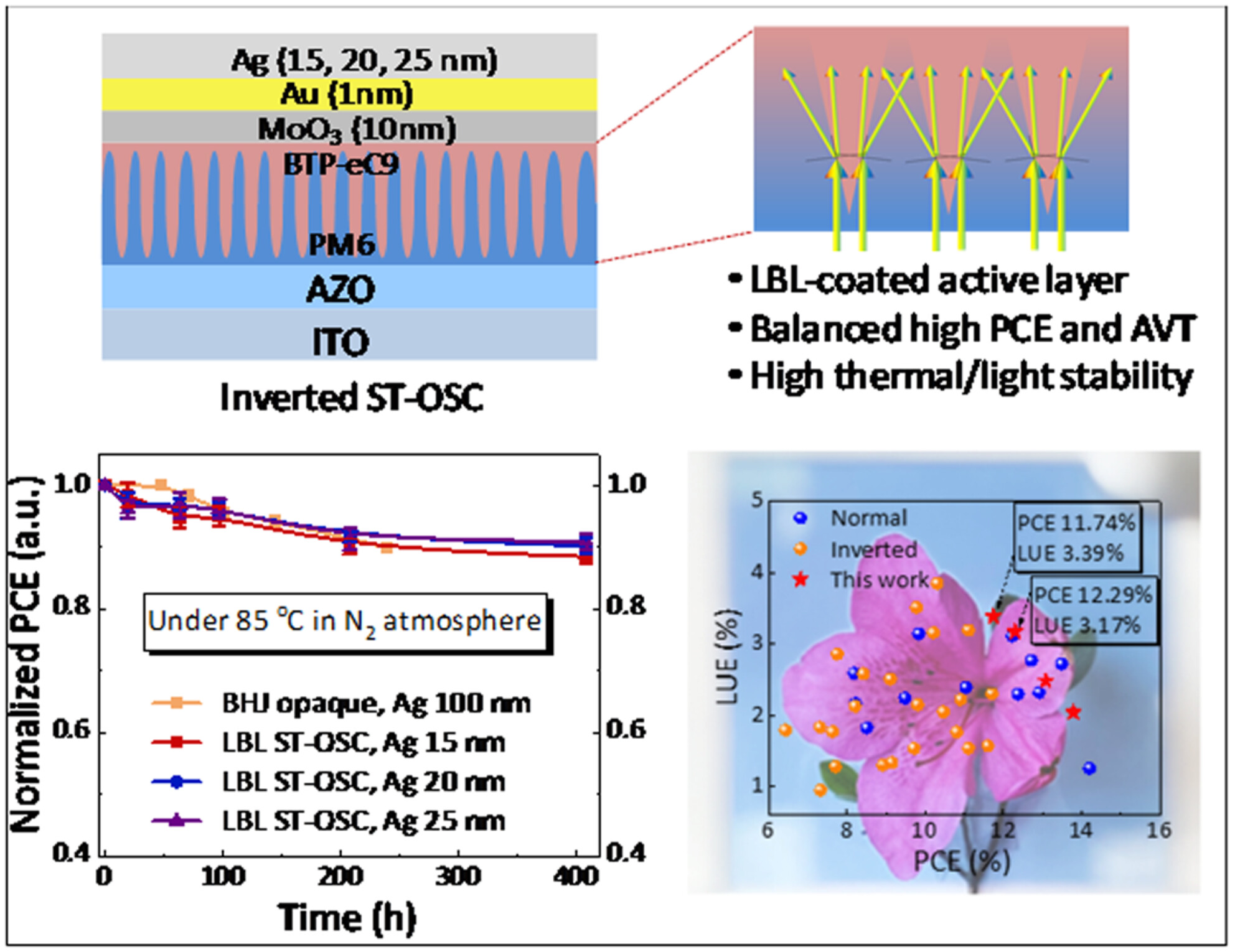
Semitransparent organic solar cells are fabricated with a comb-shaped active layer deposited by reversed LBL spin-coating. The efficiency, AVT, and stability of LBL-processed ST-OSCs are explored and discussed for the first time. Optimal PCE (12.29–13.78%) and corresponding AVT (25.80–14.58%) are accomplished. Promising thermal and light stability are demonstrated, with PCE retention of 90% and 72–85% achieved under thermal and light stress for 400 h, respectively.
Perovskite Solar Cell
Machine Learning-Assisted Fabrication of PCBM-Perovskite Solar Cells with Nanopatterned TiO2 Layer
- First Published: 27 November 2023
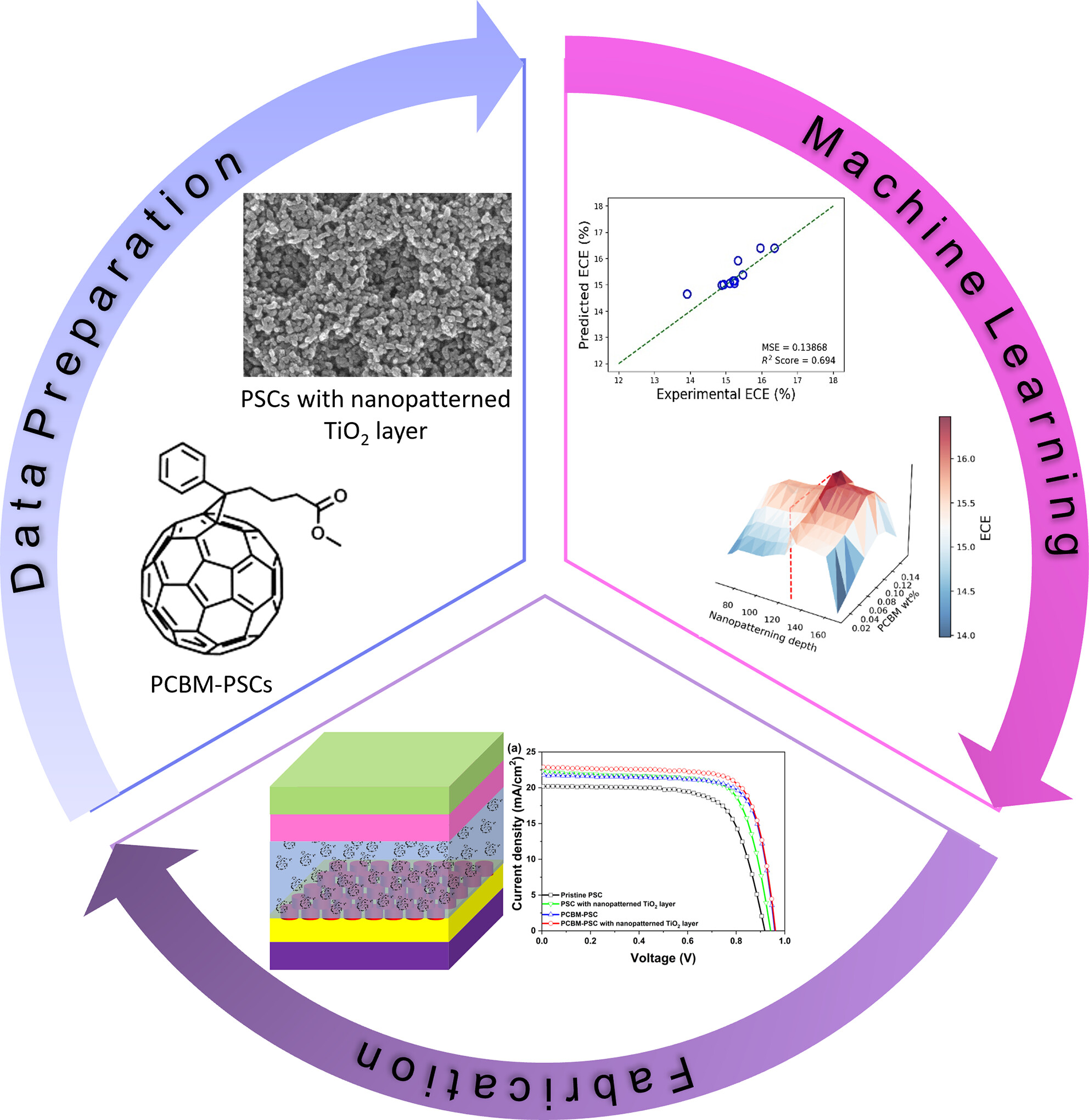
By using machine learning to predict the best combination of nanopatterning depth of mp-TiO2 and wt% of PCBM, along with the photovoltaic parameters, the combination that exhibited the highest performance was selected as a reference to fabricate the PSCs. The results were consistent with the predictions and the performance of the PSC enhanced from 13.085% to 17.338% (32.5% enhancement).
Photovoltaics
Bias-Free Solar-to-Hydrogen Conversion in a BiVO4/PM6:Y6 Compact Tandem with Optically Balanced Light Absorption
- First Published: 18 December 2023
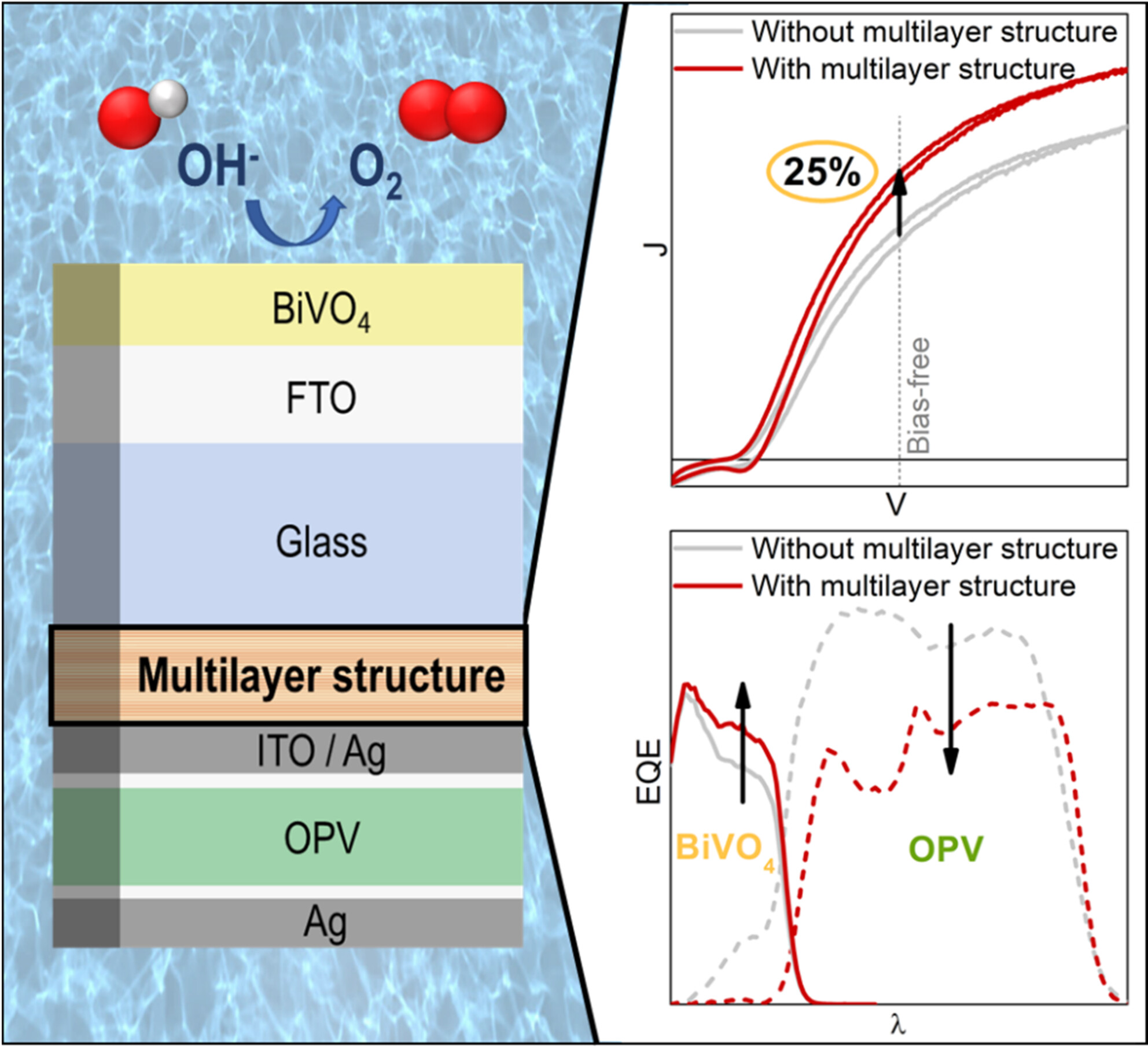
This work presents a route to achieve maximal solar-to-hydrogen conversion efficiency in tandem photoelectrochemical devices for solar-assisted water splitting, by combining absorbing materials with complementary absorption profiles and optimal bandgap energies. The introduction of a multilayer structure optimized by an inverse design approach to balance light absorption plays a key role to reach such efficiency limit.
Perovskite Solar Cells
High-Quality van der Waals Epitaxial CsPbBr3 Film Grown on Monolayer Graphene Covered TiO2 for High-Performance Solar Cells
- First Published: 01 November 2023
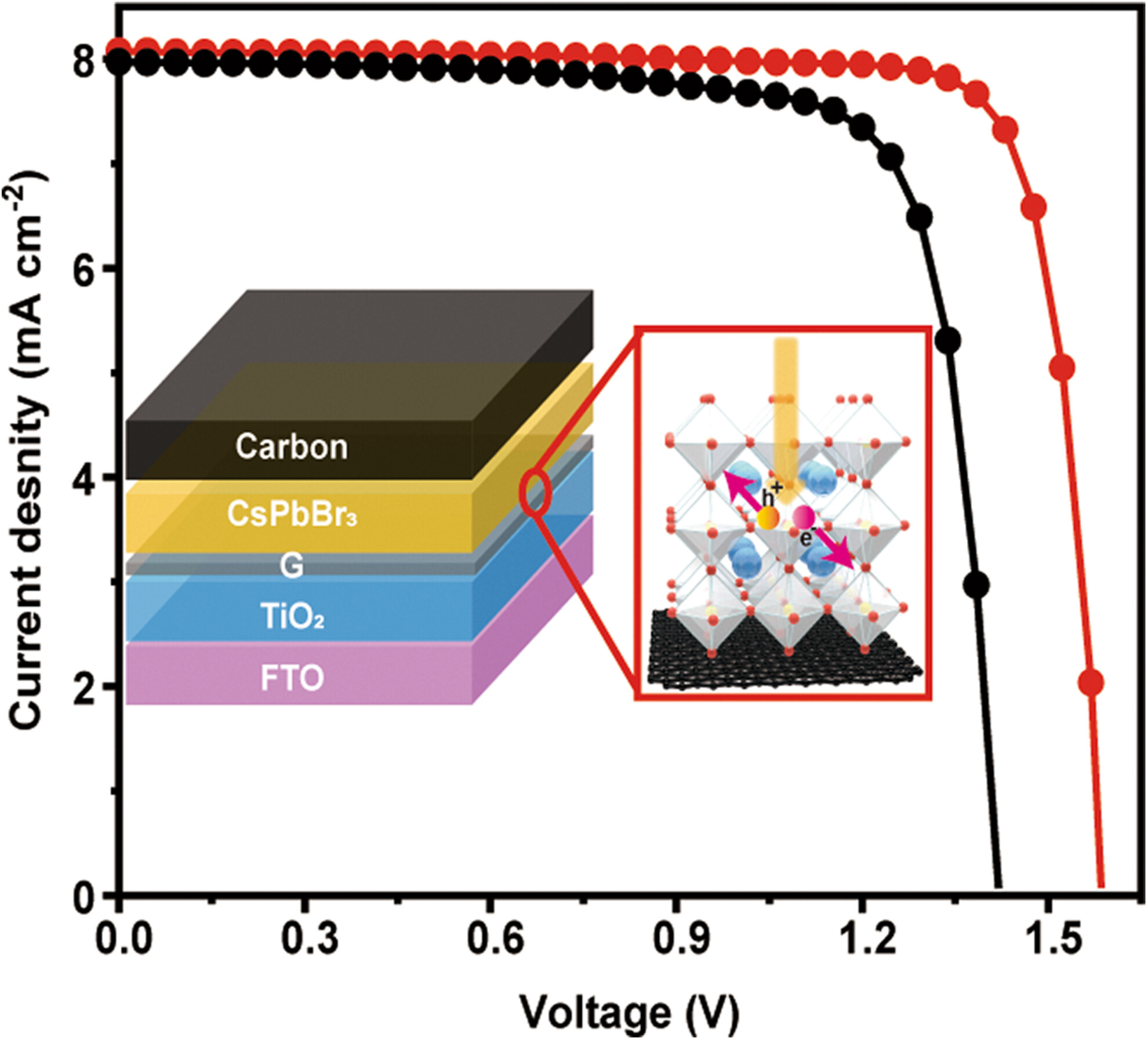
The monolayer graphene could be a good interlayer between the perovskite and electron transport layer. The results show that the smooth, clean, and stable graphene layer not only tunes the growth of perovskite but also enhances carrier transportation. As a result, the perovskite solar cells with graphene show a champion PCE of up to 10.64%.
All-Polymer Solar Cells
Toluene Processed All-Polymer Solar Cells with 18% Efficiency and Enhanced Stability Enabled by Solid Additive: Comparison Between Sequential-Processing and Blend-Casting
- First Published: 11 December 2023
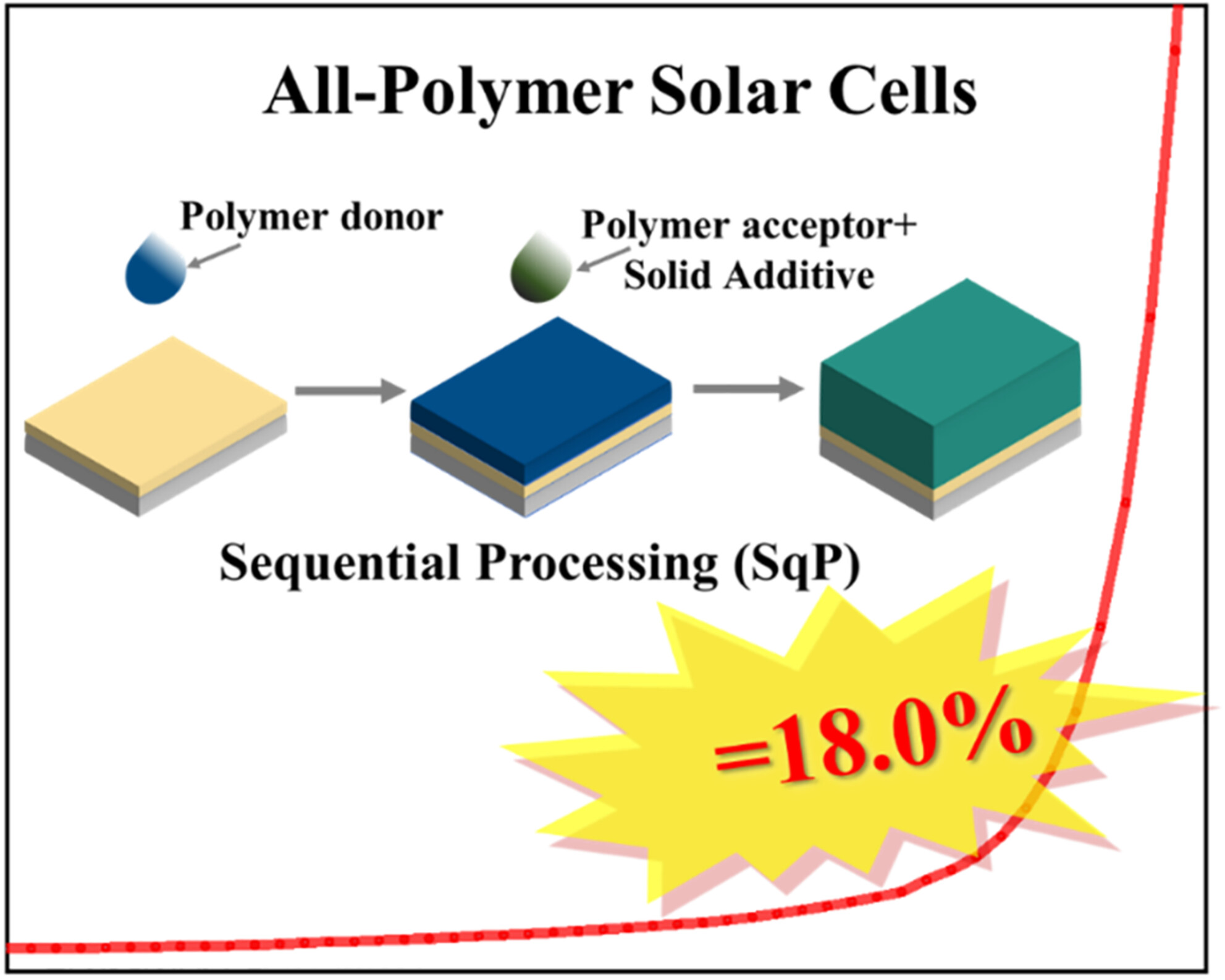
The lack of device engineering limits the performance of many promising polymer acceptors. We employ a combined effort of the sequential processing technique and the incorporation of solid additive to significantly promote the all-polymer solar cell device (18%) with the polymerized small molecule acceptor (PJ1r). The device is made from toluene instead of the commonly used chloroform. An enhanced photostability is observed in the 18% device.
CAPACITOR
Supercapacitor
Thick Electrodes of a Self-Assembled MXene Hydrogel Composite for High-Rate Energy Storage
- First Published: 09 June 2023

The vertically aligned MXene hydrogel composite with high ionic-electronic transport pathways for electrons and ions, which ensure efficient charge delivery to and from the electrodes for thickness independent energy storage. The resulting electrode show excellent performance in both aqueous and organic electrolytes with respect to high capacitance, stability, and high-rate capability for thick electrodes.
High-Performance All-Printed Flexible Micro-Supercapacitors with Hierarchical Encapsulation
- First Published: 04 July 2023
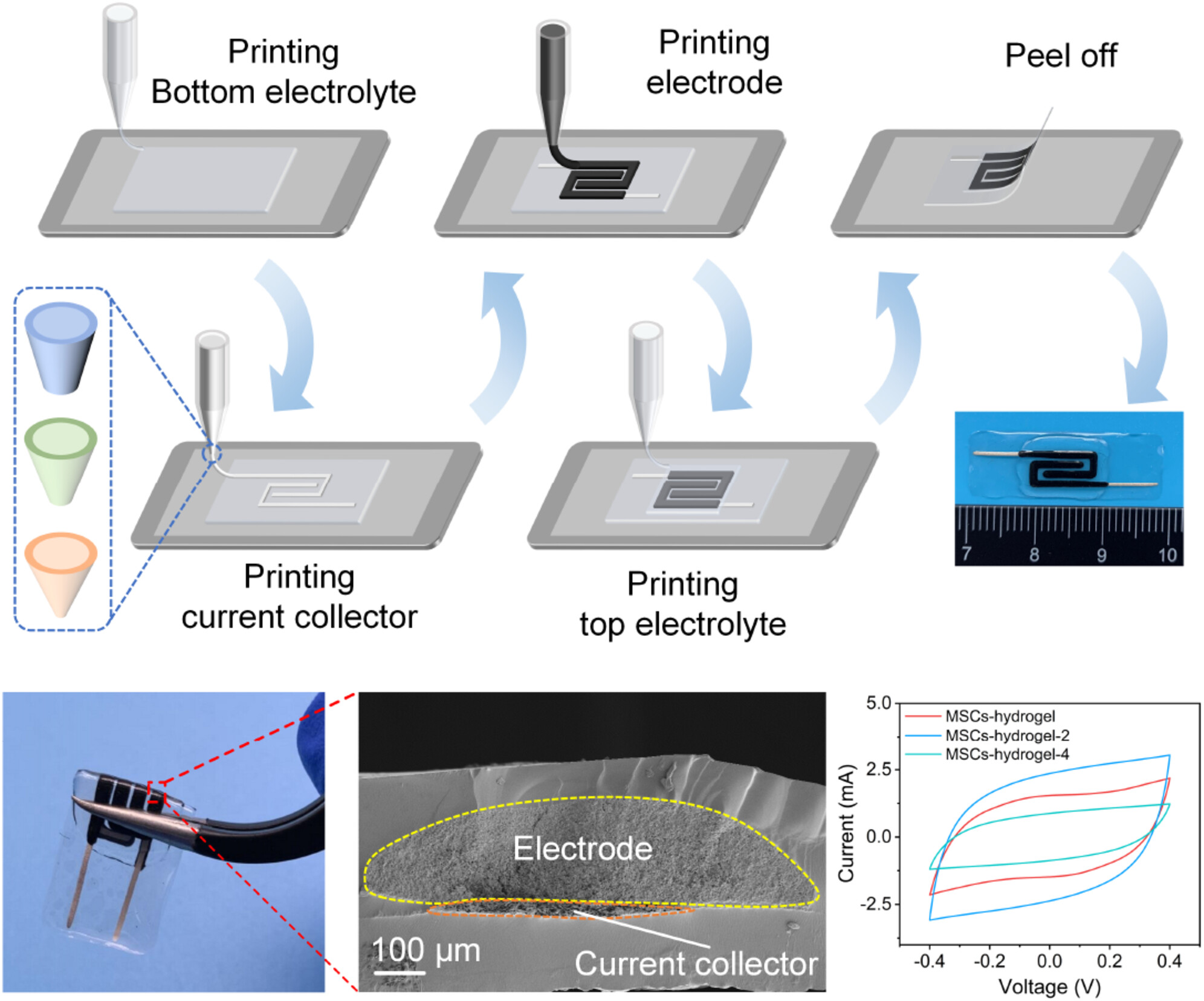
An all-printing strategy is developed for the fabrication of in-plane flexible and substrate-free micro-supercapacitors with hierarchical encapsulation. This hierarchical structure provides better protection and flexibility for the printed devices. Furthermore, the all-printed micro-supercapacitors can achieve expected high performances by the rational structure design of the current collector.
Strong Interaction Between Redox Mediators and Defect-Rich Carbons Enabling Simultaneously Boosted Voltage Windows and Capacitance for Aqueous Supercapacitors
- First Published: 12 July 2023
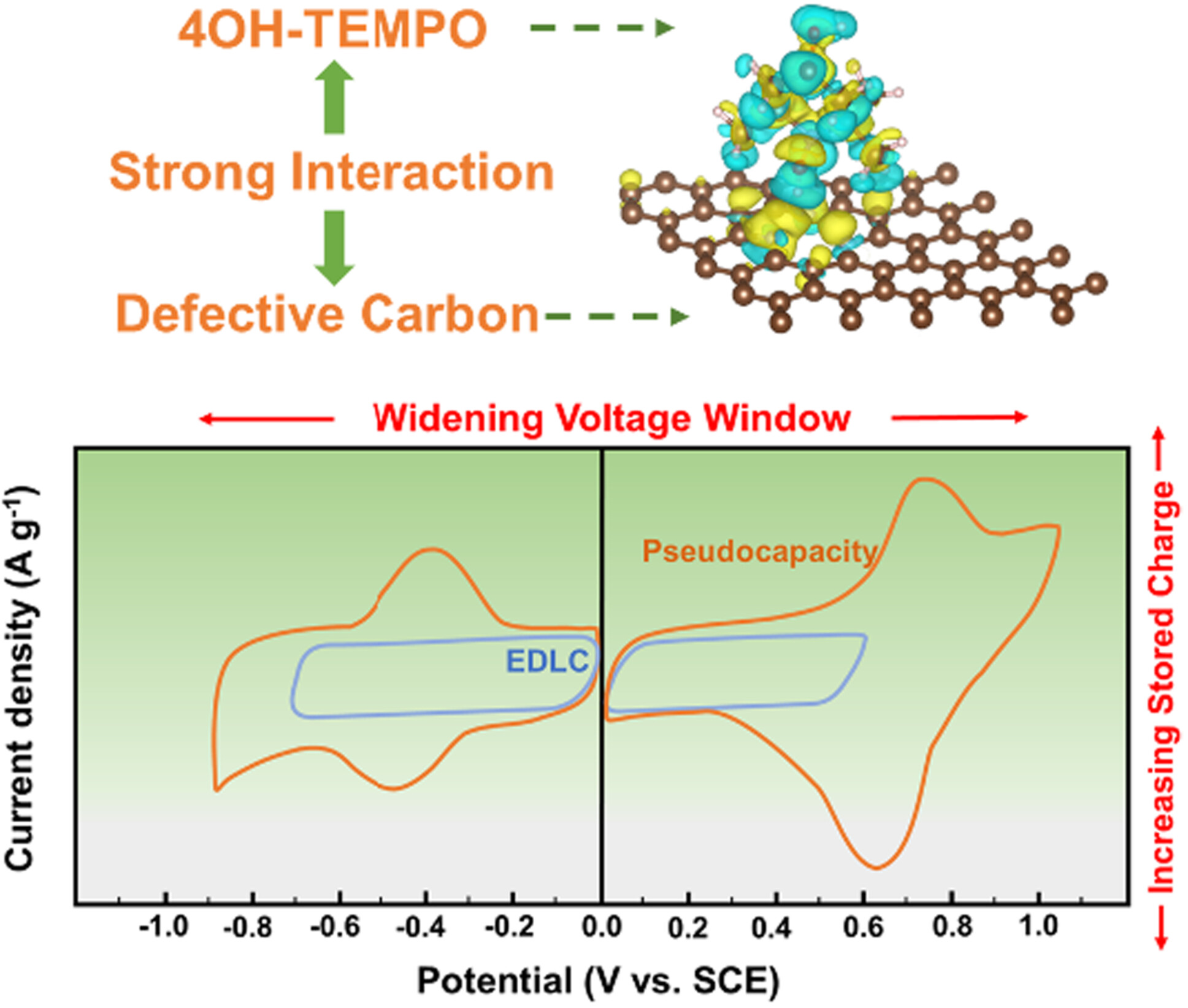
The robust interaction between intrinsic defect-rich carbons and 4-hydroxy-2,2,6,6-tetramethylpiperidinyloxyl (a common redox mediator for supercapacitors) has been exploited to enhance both the voltage window and stored charges in supercapacitors. This simultaneous improvement results in a significantly enhanced energy density.
Electrochemical Activation-Induced Structural Transformation in Ni(OH)2/Ti3C2Tx/NF Systems with Enhanced Electrochemical Performance for Hybrid Supercapacitors
- First Published: 26 September 2023
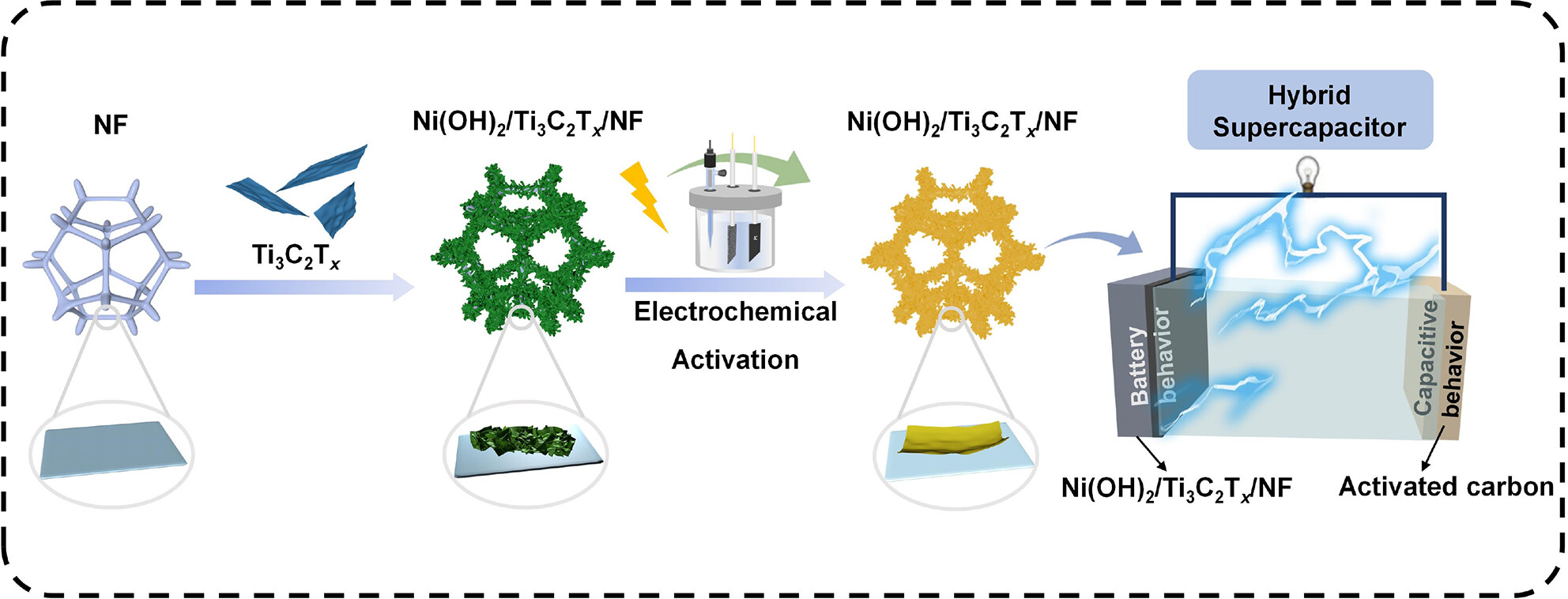
A facile and cost-effective strategy was developed to in situ grow a highly conductive layer of Ni(OH)2/Ti3C2Tx composite on the nickel foam (NF) collector, which undergoes changes in crystallinity, morphology, and electronic structure via the electrochemical activation, resulting in a significant increase in the electrochemical performance.
Graphene Nanoribbons Enhancing the Electronic Conductivity and Ionic Diffusion of Graphene Electrodes for High-Performance Microsupercapacitors
- First Published: 10 December 2023
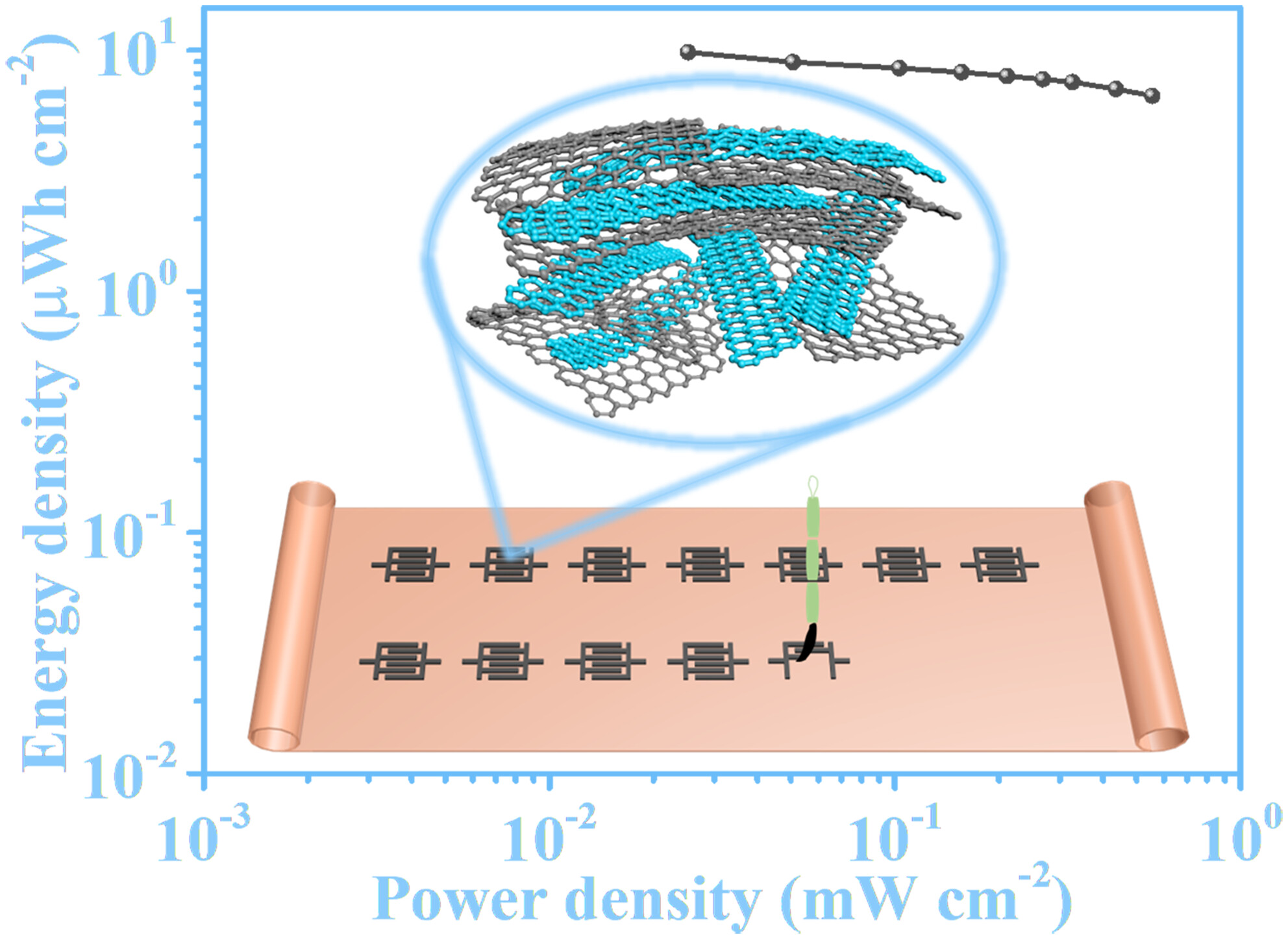
The graphene and graphene nanoribbons electrodes with porous layer structure are designed and 3D printed. The electrodes possess both improved ionic and electronic properties thanks to the assistance of 2D graphene nanoribbons and self-sacrificial templates of ethyl cellulose. The microsupercapacitors based on the newly designed electrodes deliver high energy density of 9.83 μWh cm−2.
Batteries
Template-Induced Graphitic Nanodomains in Nitrogen-Doped Carbons Enable High-Performance Sodium-Ion Capacitors
- First Published: 11 January 2024
Supercapacitor
Self-Powered Piezo-Supercapacitors Based on ZnO@Mo-Fe-MnO2 Nanoarrays
- First Published: 10 December 2023
Liquid Crystal Epoxy
Advances in Liquid Crystal Epoxy: Molecular Structures, Thermal Conductivity, and Promising Applications in Thermal Management
- First Published: 11 February 2024
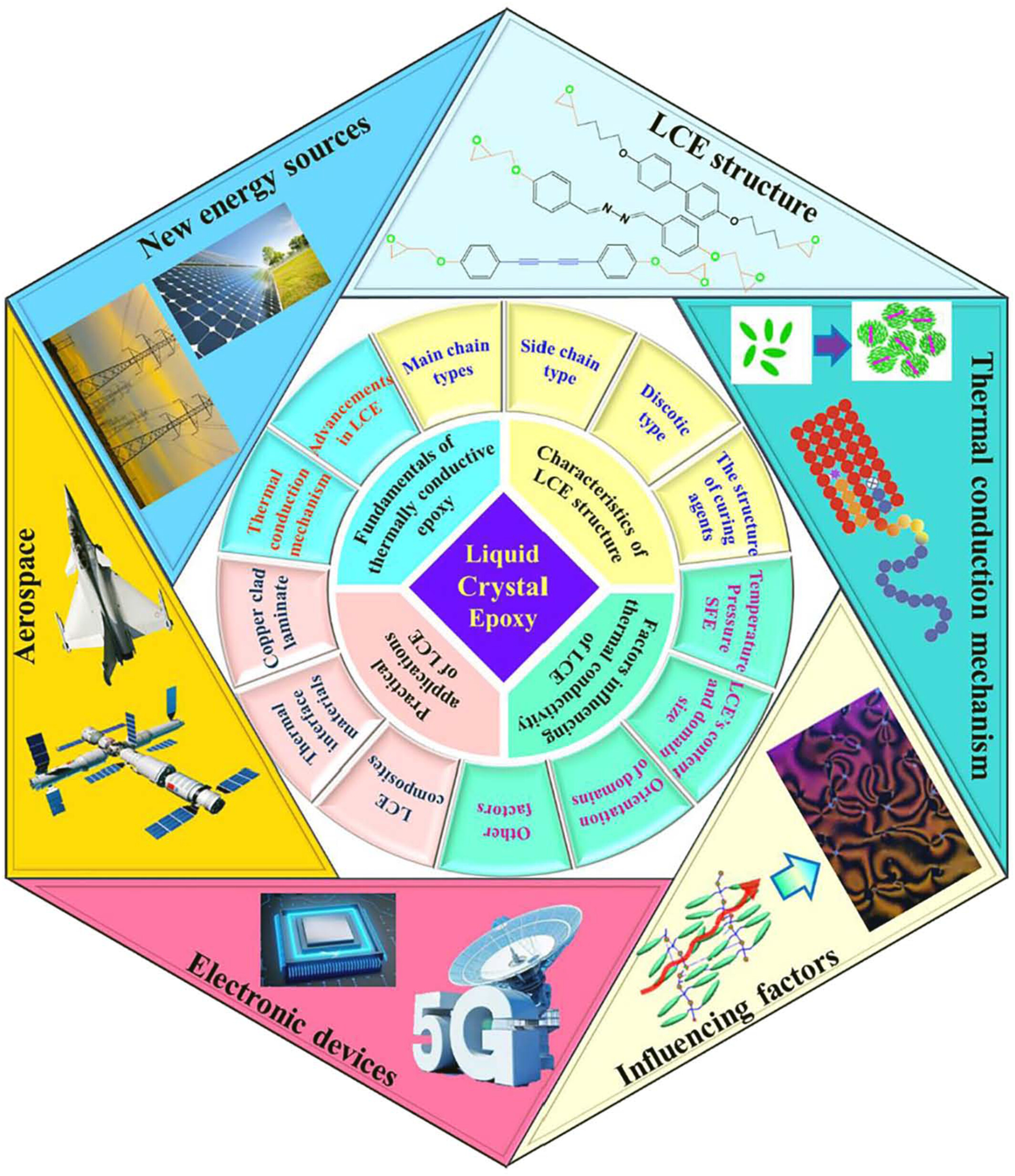
This article provides a comprehensive review on recent advances in liquid crystal epoxy (LCE), emphasizes the relationship between LCE's microscopic arrangement, organized mesoscopic domain, thermal conductivity, and relevant physical properties, and reveals the underlying heat conduction mechanism and potential applications in thermal management.
Thermoelectric Materials
Realizing High Thermoelectric Performance in n-Type Se-Free Bi2Te3 Materials by Spontaneous Incorporation of FeTe2 Nanoinclusions
- First Published: 02 August 2023
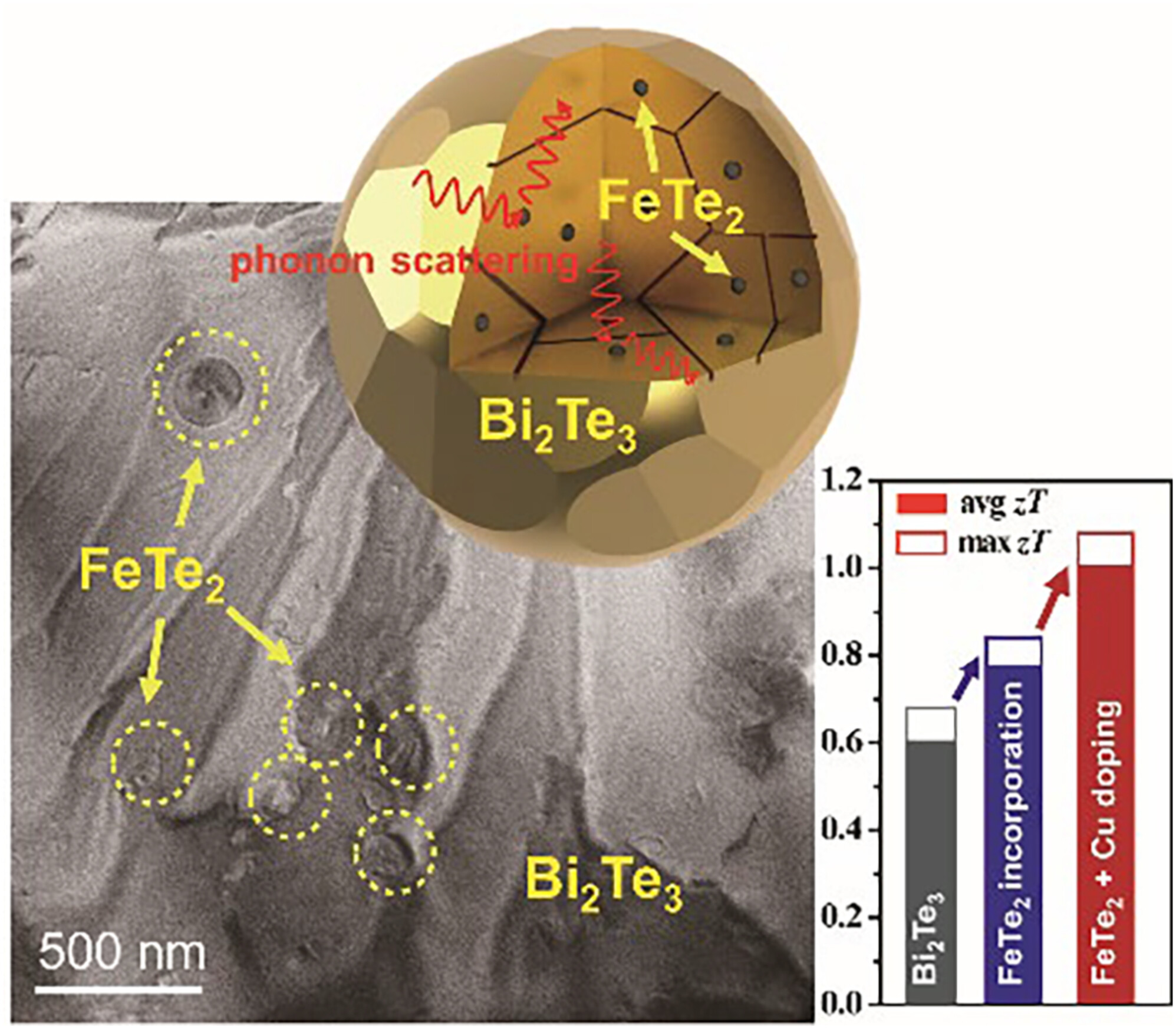
A novel approach for realizing high thermoelectric performance in Se-free Bi2Te3-based n-type materials is proposed. FeTe2 nanoinclusions are spontaneously generated in Bi2Te3 alloys by controlling the cooling rate, which enhances electrical transport and phonon scattering effectively. Furthermore, additional Cu doping results in a high zT value of 1.08, which is an increase of over 60% compared with pure Bi2Te3.
Thermoelectricity
Atomic-resolution Interfacial Microstructure and Thermo-electro-magnetic Energy Conversion Performance of Gd/Bi0.5Sb1.5Te3 Composites
- First Published: 22 January 2024
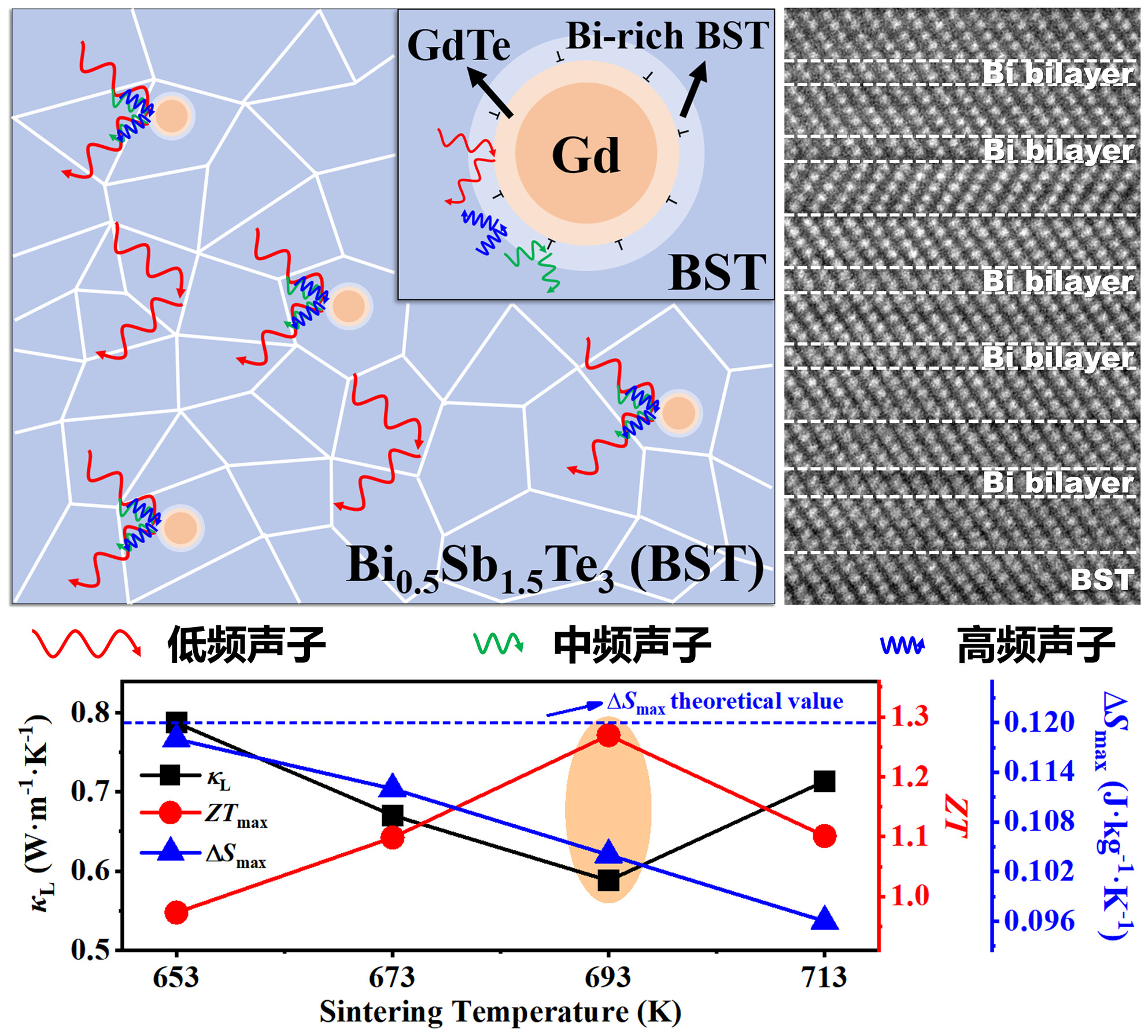
The atomic resolution interfacial structure in Gd/Bi0.5Sb1.5Te3 thermo-electro-magnetic composites as prepared at different temperatures is characterized. The formation of GdTe interfacial phase and antisite defects result in increased hole concentration and enhanced phonon scattering. The optimized composite exhibits a maximum dimensionless figure of merit 1.27 at 300 K and preserves the excellent room-temperature magnetocaloric performance of Gd.
Electrocatalysis
Two-Dimensional Metallophthalocyanine Nanomaterials for Electrocatalytic Energy Conversion
- First Published: 31 January 2024

Recent advances in a variety of 2D metallophthalocyanine materials based on composites and conjugated frameworks for energy conversion were reviewed with a particular focus on how the nanostructure and composition regulate physicochemical properties and thus improve the electrocatalytic performance, which will guide the rational design of catalysts based on metallophthalocyanines.
Triboelectricity
Improved Flexible Triboelectric Nanogenerator Based on Tile-Nanostructure for Wireless Human Health Monitor
- First Published: 04 July 2023
Triboelectric Nanogenerators
Wearable Triboelectric Nanogenerators Based on Printed Polyvinylidene Fluoride Films Incorporated with Cobalt-Based Metal–Organic Framework for Self-Powered Mobile Electronics
- First Published: 24 October 2023
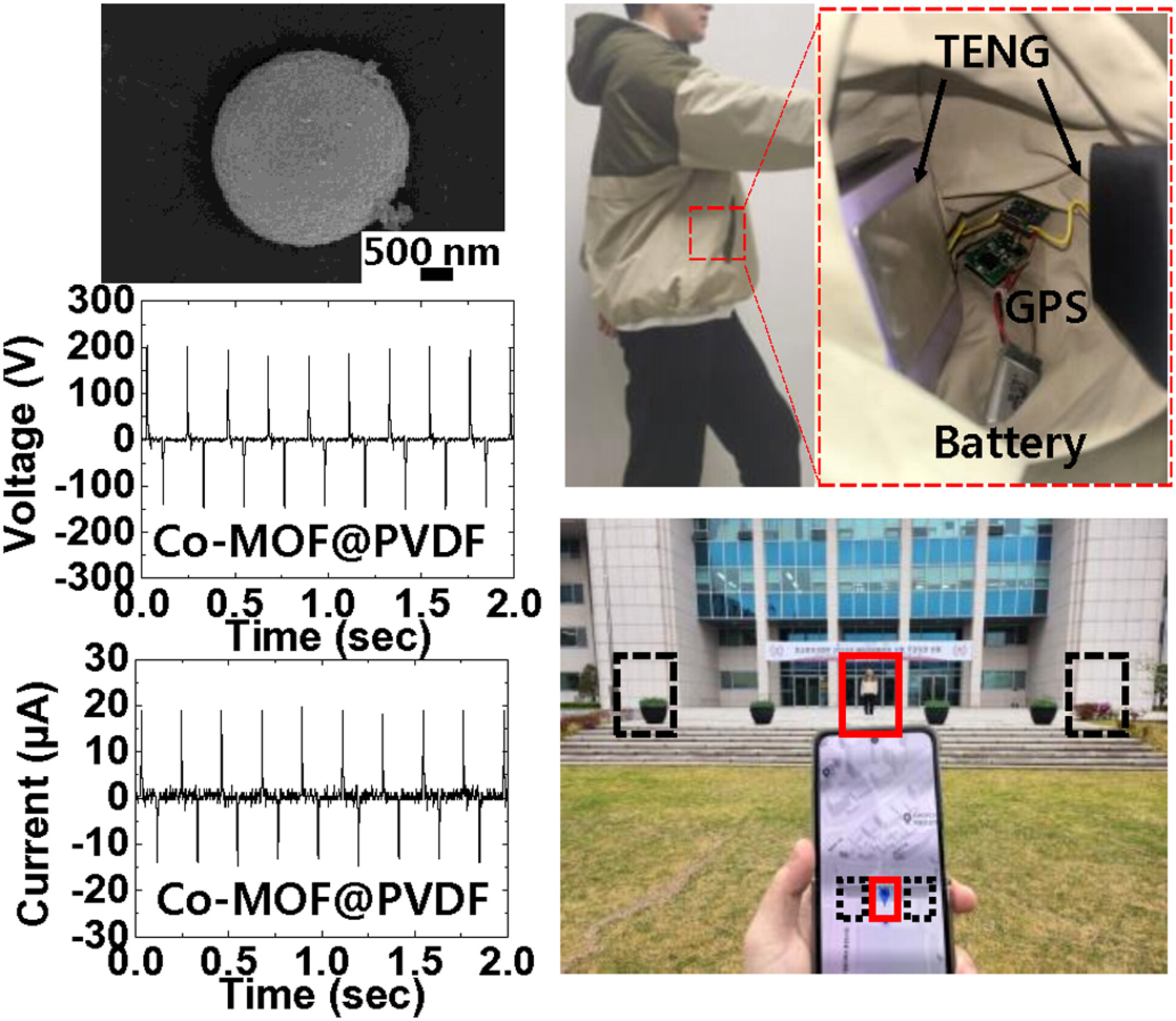
Wearable triboelectric nanogenerator (TENG) based on a bar-printed polyvinylidene fluoride (PVDF) film incorporated with cobalt-based metal–organic framework (Co-MOF) is developed. The enhanced output performance was attributed to the phase transition of PVDF, as facilitated by the incorporation of the MOF. The feasibility of self-powered mobile electronics was demonstrated by integrating the wearable TENG to power a global positioning system.
Supercritical Carbon Dioxide
CO2-Induced Modulation of Si–O Bonds for Low Temperature Plastic Deformation of Amorphous Silica Nanoparticles with Enhanced Photoluminescence
- First Published: 29 June 2023
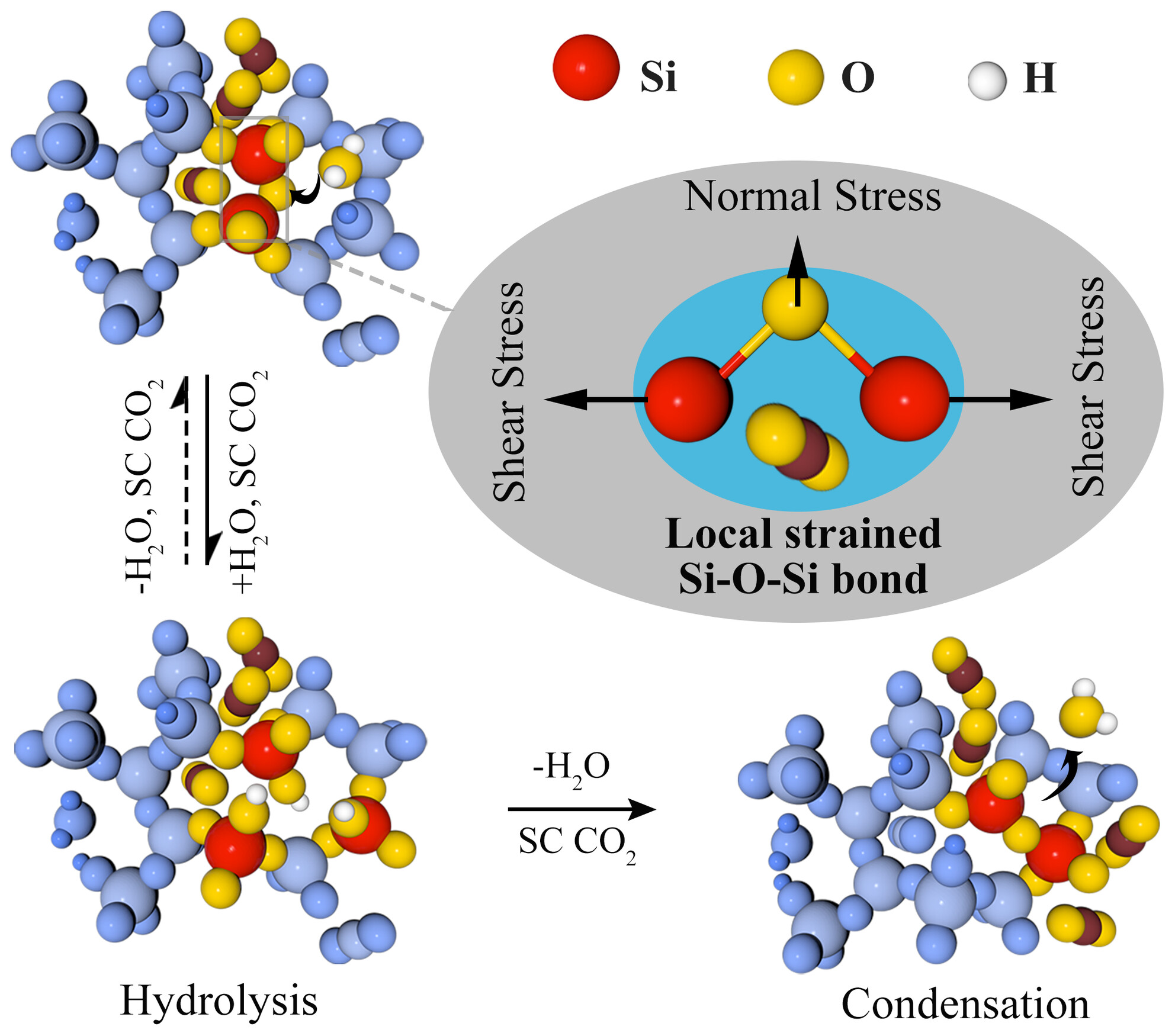
Modulation of Si–O bonds in silica to achieve plastic deformation using supercritical CO2 under mild temperature is reported. Experimental and theoretical investigations suggest that CO2 molecules not only can promote the condensation of –Si–OH but also can intercalate into the microchannels of silica and induce the local strain of siloxane rings and facilitate the Si–O bond cleavage.
CO2 Utilization
Porous Indium Nanocrystals on Conductive Carbon Nanotube Networks for High-Performance CO2-to-Formate Electrocatalytic Conversion
- First Published: 04 July 2023
Solar Steam Generation
Amphipathic Janus Nanofibers Aerogel for Efficient Solar Steam Generation
- First Published: 29 November 2023
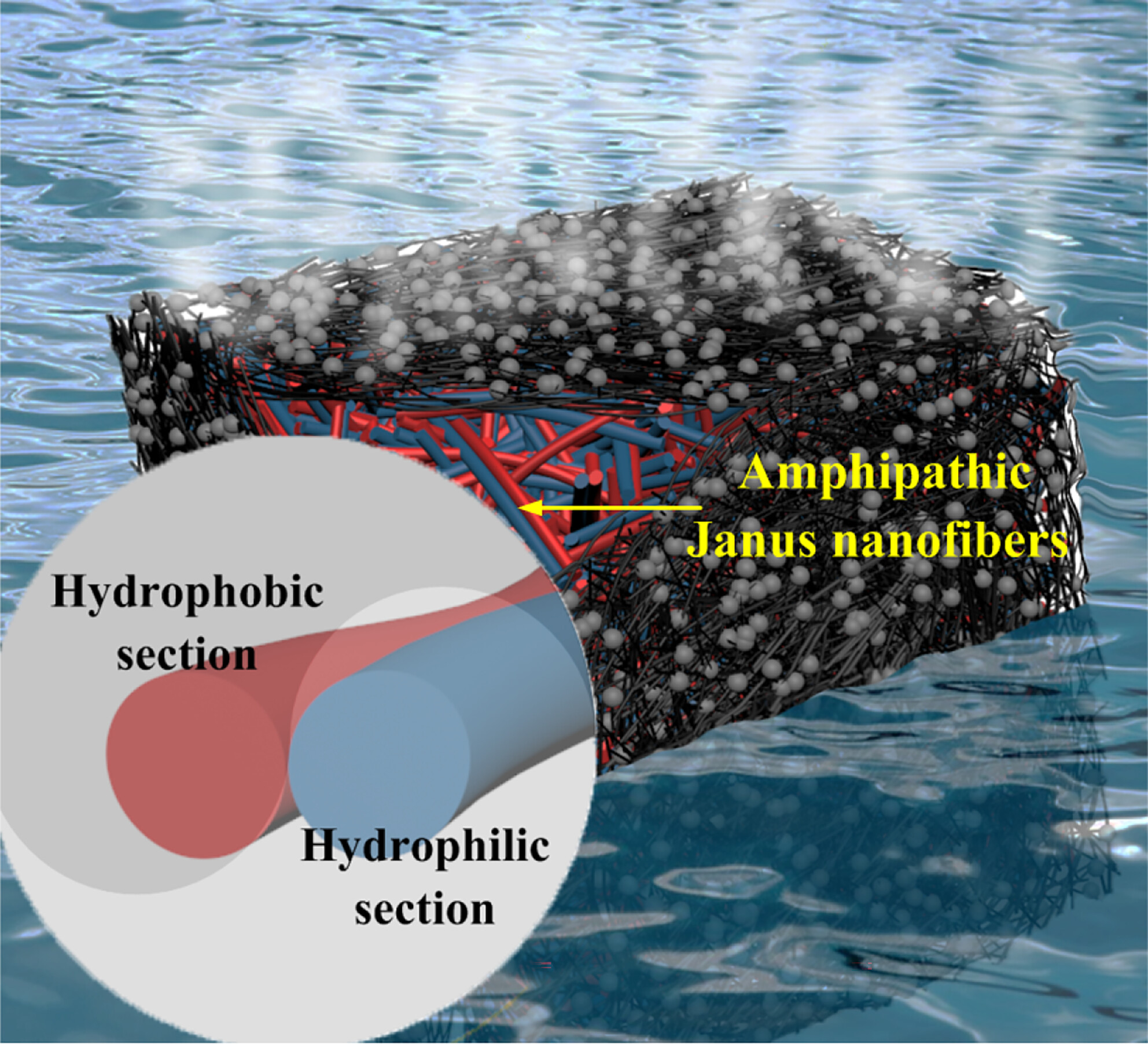
Hydrophile/hydrophobe amphipathic Janus nanofibers aerogel is designed and used as a host material for preparing solar steam generators. The microscopic combination of hydrophilic and hydrophobic materials brings many advantages such as fast water evaporation, high-energy efficiency, excellent stability, and self-floating, salt-resisting, self-cleaning, thermal-resisting properties. The water evaporation rate can reach up to 2.944 kg m−2 h−1 under 1 sun irradiation.
Electrocatalysis
Triphenylphosphine-Assisted Exsolution Engineering on Ruddlesden–Popper Perovskites for Promoting Oxygen Evolution
- First Published: 04 September 2023
Semiconductor Materials
High-Quality and Wafer-Scale Cubic Silicon Carbide Single Crystals
- First Published: 10 December 2023
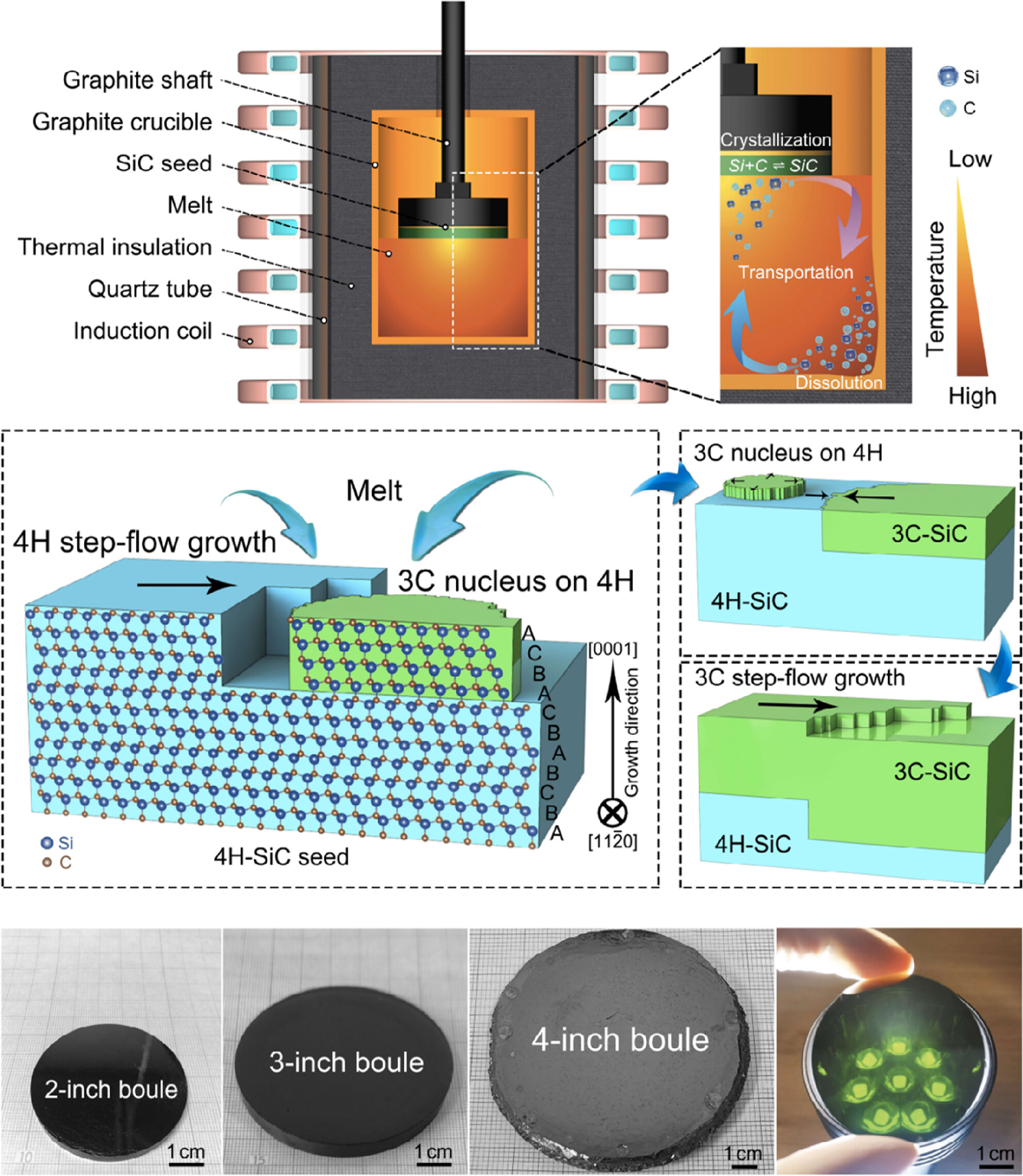
3C-SiC shows great potential in fabrication of reliable and long-life devices thanks to its superior mobility, thermal conduction, and low interfacial defects. The difficulties in the growth of 3C-SiC single crystals, however, hampers the device development. By adjustment of the melt surface tension, 3C-SiC are made thermodynamically favored from nucleation to growth on a 4H-SiC hetero-substrate by TSSG, leading to the successful growth of high-quality and wafer-scale 3C-SiC single crystals. The diameter and the thickness are 2–4 inches and 4.0–10.0 mm, respectively.




